You’re about to read the most insanely helpful blog about Swiss Train Passes on the entire internet. Well, at least that’s our goal.
We have a lot of info to cover to help you fully understand and utilize your Swiss train pass. So let’s not waste any time.
Just here for the FREE SWISS TRAIN PASS CHECKLIST?
Want to Watch instead of Read?
The PROBLEM with Swiss Train Passes
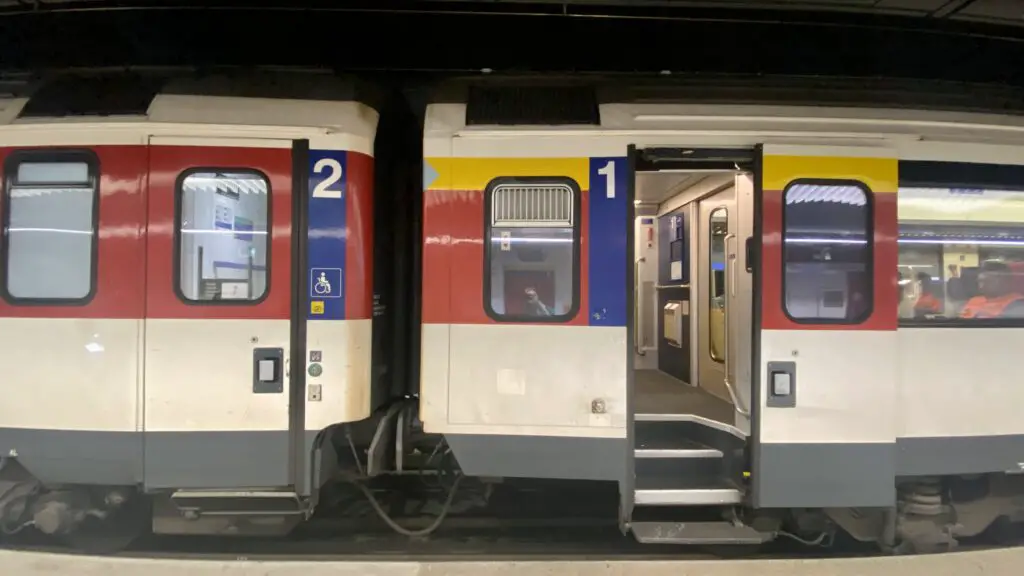
Let’s start with the most obvious problem, shall we? Swiss transportation — and specifically, Swiss train passes — can be very, very confusing! (As evidenced by the abundance of emails, comments, and questions we get about the topic.)
There’s no single train pass that literally covers every ride you might want to take in Switzerland. And no, the Swiss Travel Pass, which says it helps you “discover Switzerland with just a single ticket” doesn’t actually deliver on that promise when you’re in the mountains.. Which just so happen to be some of the most-expensive rides in the entire country, and likely why you’re coming to Switzerland in the first place!
So the idea of saving money or gaining convenience with a train pass is appealing. But it’s also incredibly confusing to know which one — or ones! — to buy.
- There are no fewer than 19 different train passes you could buy for your trip to Switzerland.
- And that doesn’t even account for the fact that each pass is valid in different areas of the country.
- And are offered for a variety of durations.
- And may or may not be discounted for different age groups or for travelers with another train pass…
Whew! Now if you’re overwhelmed and about to cry, let me stop you right there before you cancel your Swiss vacation.
This blog is full of solutions, not problems.
And your journey from Swiss train pass confusion to clarity begins right now.
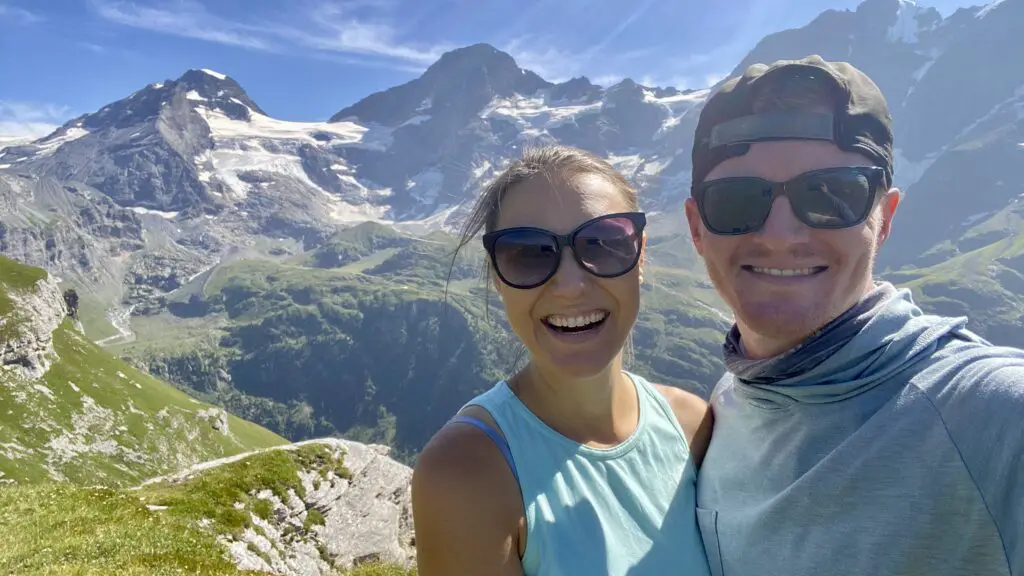
I’m Brett, and my wife Jana and I make videos and write blogs and detailed travel guides to help you travel Switzerland with confidence.
Since 2012, we’ve traveled and researched Switzerland extensively, and even moved here in 2023. Along the way, I’ve been building a super nerdy spreadsheet with every type of Swiss trip itinerary imaginable. And since then it’s become an absolute beast, where I have a few dozen tabs, hundreds of different itineraries, and thousands of formulas set up to calculate which of the insane number of train passes is best for each type of trip.
Lots of you have requested a peek at my massive spreadsheet. Sorry, it’s locked in a vault inside a bunker, buried deep within the Swiss Alps. (Just kidding, although that would be cool.)
But we’ve distilled down all of the recommendations from my spreadsheet into our free Swiss Train Pass Checklist.
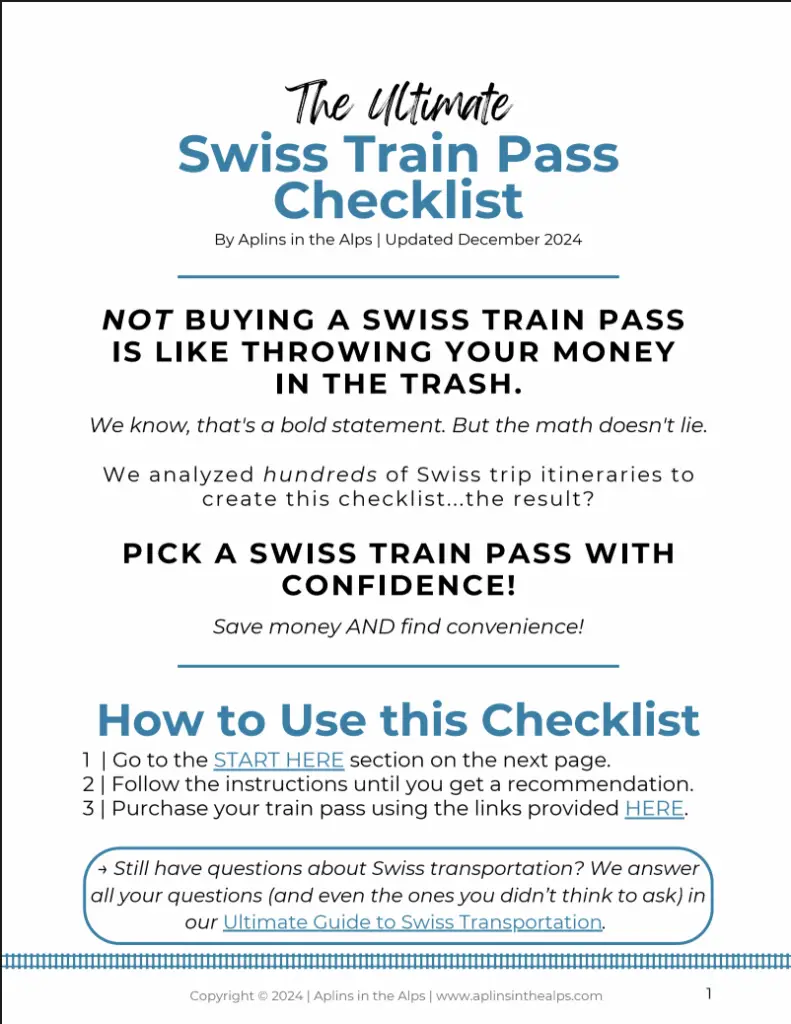
While the checklist is your cheat sheet for picking a pass, there’s a lot you still need to know about using your Swiss train pass with confidence — which is why you absolutely can’t miss what we’re covering in this blog.
Problem — PREFERENCE — Solution
We started out like many of you — as budget-conscious travelers. In fact, we spent the entire year of 2016, traveling to 20 different European countries while spending just under $12,000.
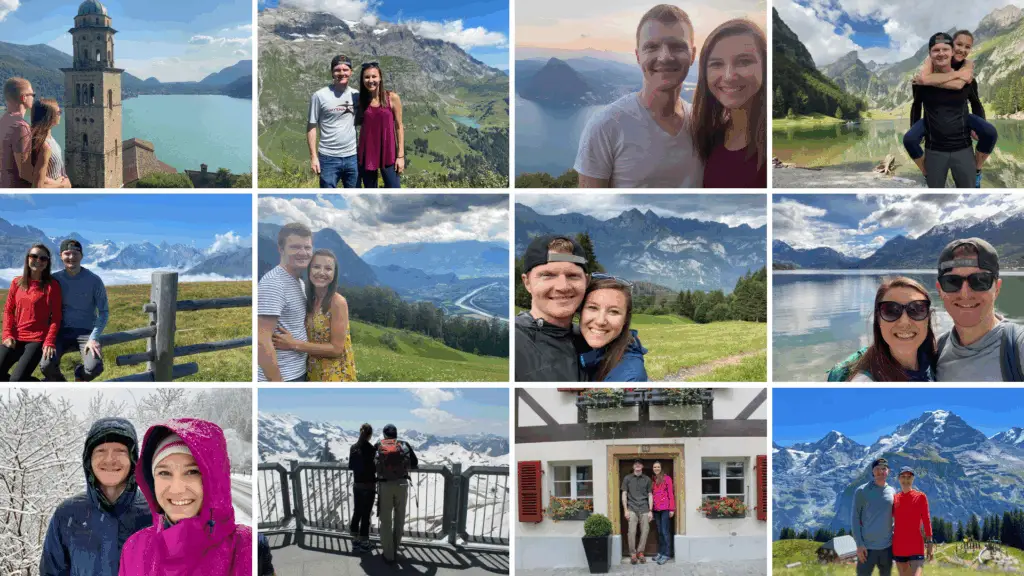
Now, there’s a lot we could say about how we did that, but it’s not the topic of this blog. My real point is to say that, to us, the problem of choosing a Swiss train pass used to have a pretty simple solution — find the cheapest option and go with it. Problem solved.
But as we’ve ventured to every Swiss canton while growing our business, we discovered that this process of moving from problem to solution requires at least one additional step.
PREFERENCES. Simply put, one solution might seem ideal to one type of traveler (like 2012 on-a-budget Jana and Brett), while that same solution might be an absolute headache for another traveler (like 2025 Jana and Brett traveling with their new baby). And we’ve discovered that there are three types of preferences
PREFERENCE 1: COST SAVINGS
Some of you value COST SAVINGS. You’re budget travelers like we were, counting your pennies wherever you can so you can splurge on the things that really matter. And for you, the best solution to the problem of choosing a Swiss Train Pass is whichever solution just saves you the most money.
PREFERENCE 2: CONVENIENCE
But even the most budget-conscious among you are often looking to balance saving money with freedom and enjoyment. After all, you don’t want your vacation to turn into a part-time job! So if you value CONVENIENCE, you’re probably looking for a train pass that will cover as many transportation routes as possible, so you can buy very few (or preferably zero) tickets during your trip.
But unfortunately, if your trip will take you to multiple regions of Switzerland, especially those mountainous destinations, the solution that allows you to buy the fewest tickets is often going to require you to have 2, 3, or even more train passes. You’ll need to understand when, where, and how to use each one, which — ironically — might start to sound pretty inconvenient.
PREFERENCE 3: SIMPLICITY
If that’s you, you might desire convenience, but the thing you really value is SIMPLICITY. You would rather have one pass (or maybe two) that does a pretty good job reducing both the cost and the number of ticket purchases throughout your trip, even if it doesn’t do great at either.
Which One Best Describes You?
So which do you value most — COST SAVINGS, CONVENIENCE, or SIMPLICITY? Keep this in mind as we continue our journey. Because the best train pass solution for YOU is going to depend on your preference.
Types Of Swiss Rail Passes And Validity Maps
To start wrapping your brain around this confusing world of Swiss train passes, it’s important to know where in Switzerland you’re traveling. There are country-wide passes that can be used throughout the whole country, and there are regional passes as well.
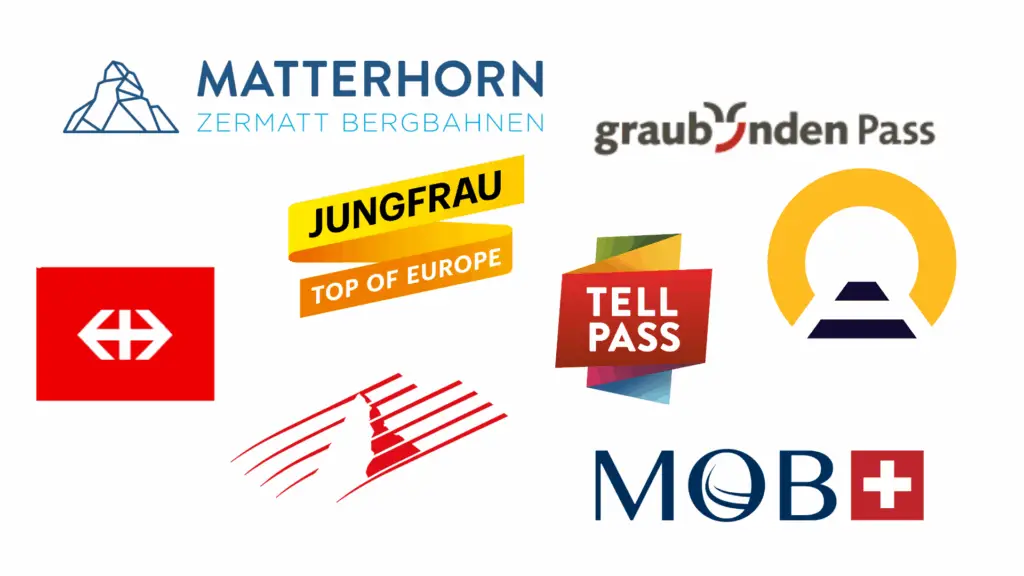
And this brings up a really important concept — every train pass has an area of validity, which represents where you can use it. Sounds simple enough, right? Nope — yet another reason why you’re reading this blog! Here are a few important clarifications about areas of validity:
- Just because a destination or a transportation route is within the area of validity doesn’t mean you can simply travel there for free with your pass. That’s because each pass has different rules for how and where it can be used.
- Often, routes within the area of validity will be fully covered by your pass. And when that’s the case, you can simply hop on board without buying an additional ticket, because your train pass is your ticket.
- But there are routes within your train pass’s area of validity that are not fully covered. And depending on your specific route and train pass, you’ll either have to pay full price or a discounted rate (often 50%, but sometimes between 25-75%). In either of these situations you’ll be required to purchase a ticket to make up the difference.
So if you were tempted to believe that country-wide passes are always better than regional passes because their area of validity is much bigger, you now know that might not be the case. And to understand why, we need to set the stage by giving you an overview of the four country-wide passes and how they work.
Country-Wide Swiss Train Passes
Country-wide passes can be used throughout the entire country, meaning their area of validity is literally all of Switzerland.
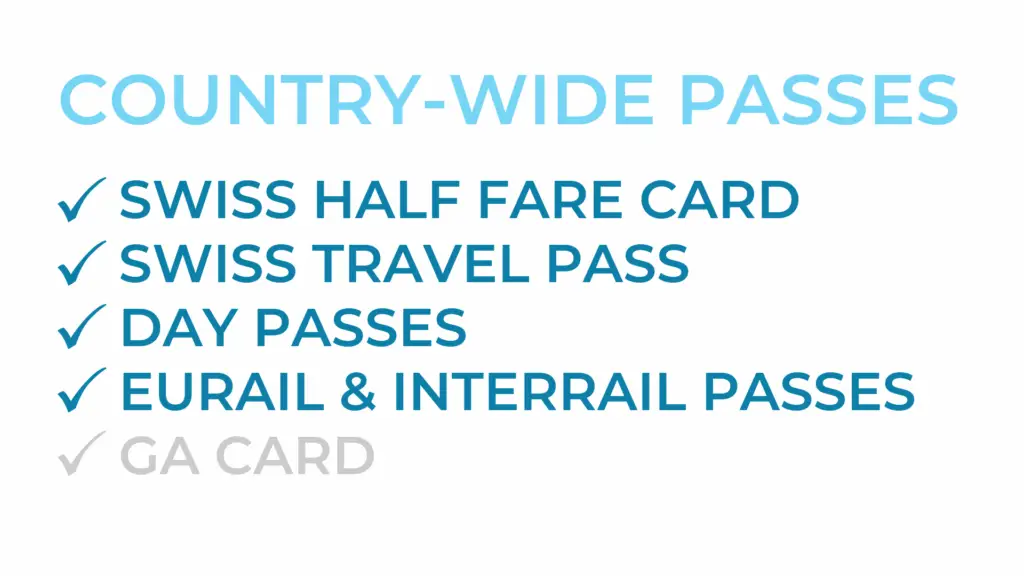
These passes include the Swiss Half Fare Card, Swiss Travel Pass, Day Passes, and the Eurail and Interrail Passes. There’s also something called a GA card, but it’s mostly made for Swiss residents who do lots of commuting, so we won’t be discussing that here.
Swiss Half Fare Card
The biggest difference in these country-wide passes is that the Swiss Travel Pass, Day Passes, and Eurail and Interrail Passes can sometimes be used without buying an additional ticket, while the Half Fare Card always requires you to buy a ticket.
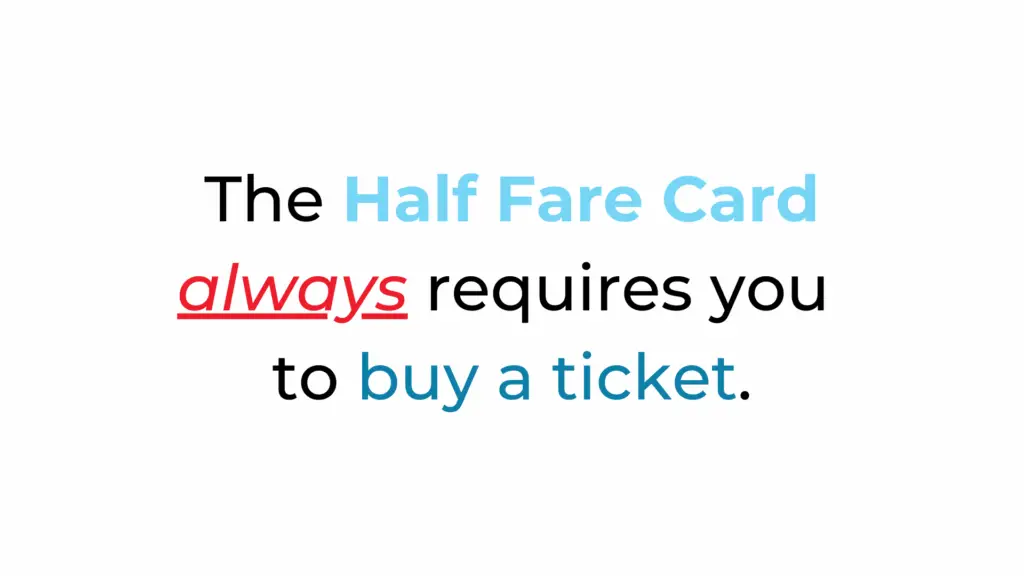
It’s basically a coupon entitling you to 50% off travel throughout Switzerland. You’ll need a ticket every time you take public transportation, but that ticket comes at half price. And this card is valid for 30 days, which as you’ll see pretty soon, is longer than just about any other pass.
And for what it’s worth, after crunching the numbers on those hundreds of sample itineraries in my spreadsheet that I mentioned earlier, the Swiss Half Fare Card wins out as the best budget option on a surprisingly high number of them.
In my opinion, the most SIMPLICITY you’ll find comes from the Swiss Half Fare Card. You can use it everywhere throughout the entire country (with very few exceptions) and get a 50% discount. How much simpler can it get?!
Yes, you’ll need to buy a ticket every time you travel, and I understand that might feel extremely inconvenient. But it’s really not, thanks to the SBB App, which is the national rail app for traveling Switzerland by public transportation. And you can completely master it by working through our SBB App tutorial. This deep dive loaded with helpful screenshots is included in our Ultimate Guide to Swiss Transportation, so don’t miss that if you already have this guide.
Swiss Travel Pass
The way the Swiss Travel Pass is marketed, it seems like it’s the one ticket you’ll need to travel anywhere in Switzerland. Which is why we bought it for our 2-week Swiss honeymoon back in 2012. And this is true for all transportation at lower elevations.
But as you start heading up and into the mountains, the Swiss Travel Pass basically gets downgraded to a Half Fare Card. It’ll give you a discount on those mountain trains and cable cars, but you’ll still need to buy a ticket. As we quickly discovered throughout our honeymooning days in the Jungfrau Region.
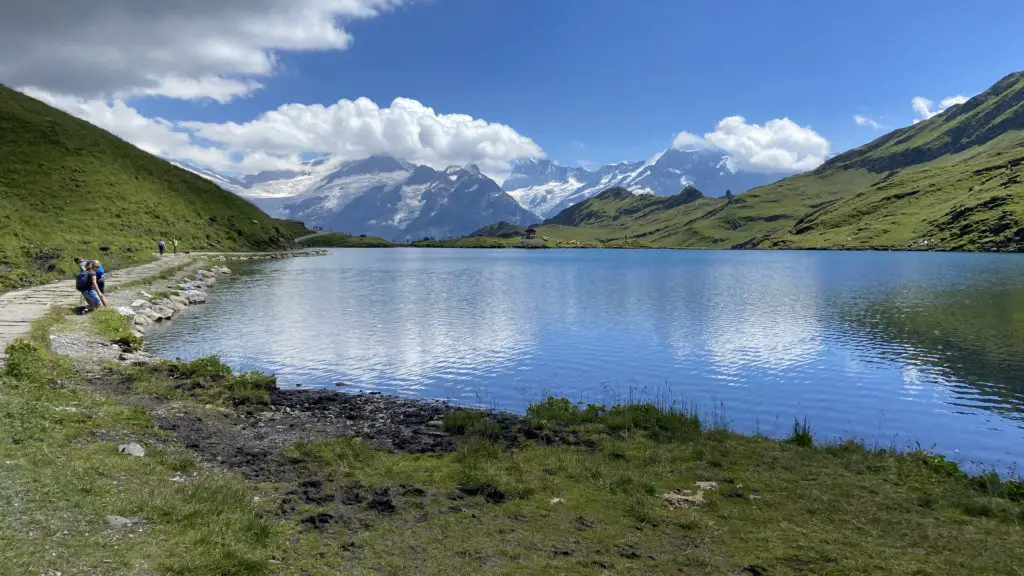
There are exceptions where the Swiss Travel Pass fully covers mountain excursions, and we’ll mention a few of those later. And I don’t know if this will help provide context, but the Swiss Travel Pass basically has to fully cover routes to destinations where people live or go to school year-round. This is why you can reach mountain villages like Mürren, Wengen and Zermatt.
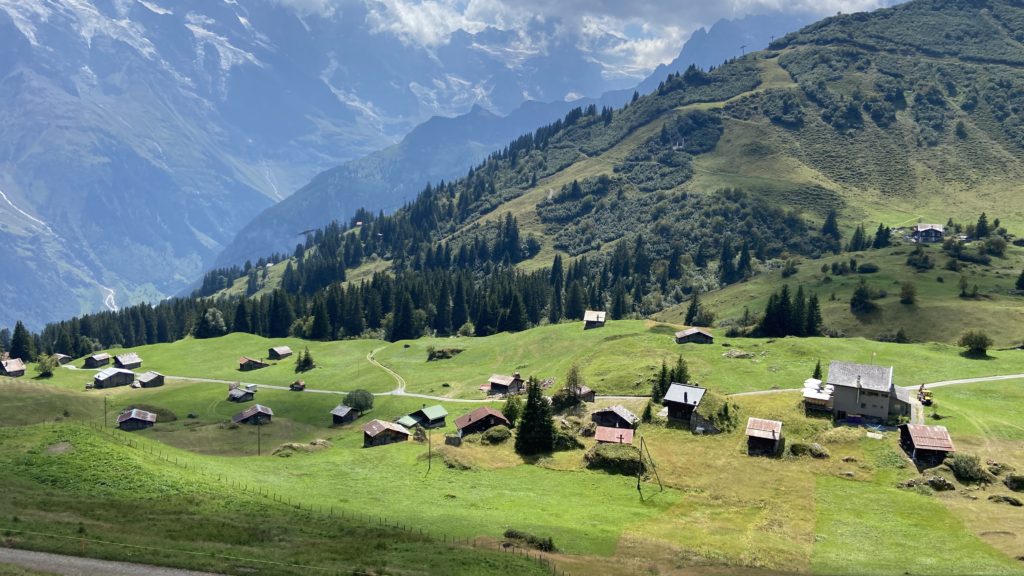
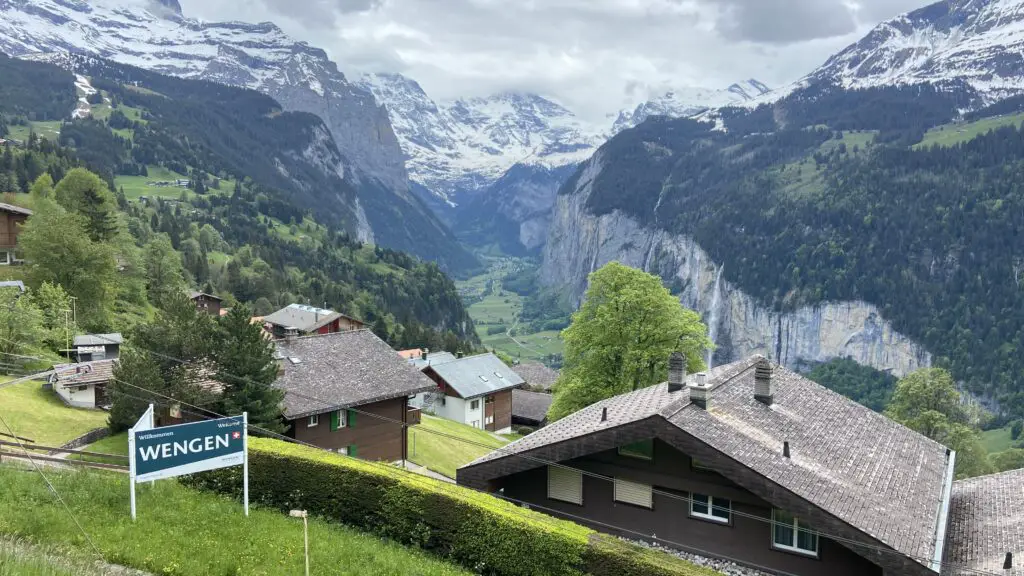
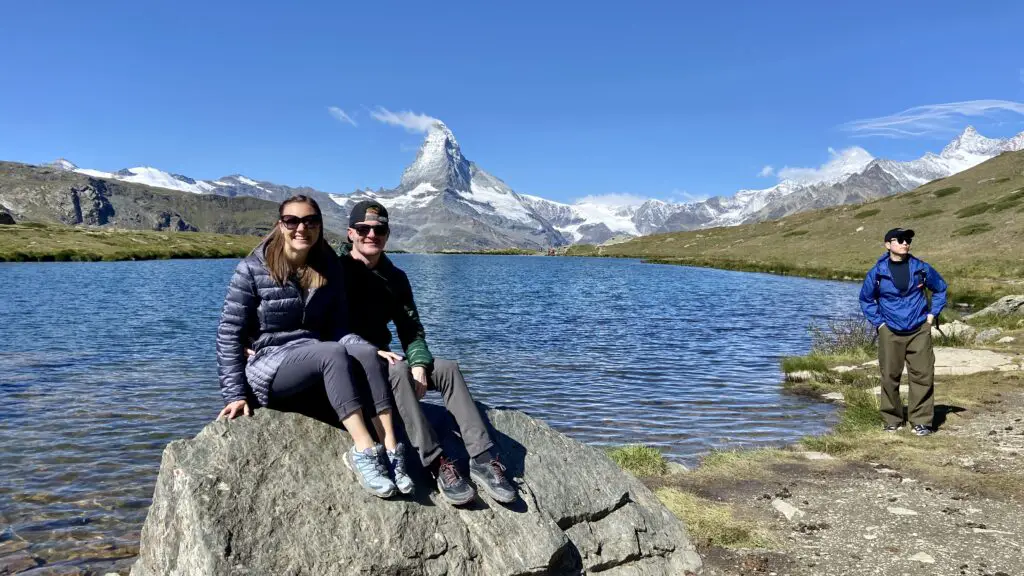
If you value COST SAVINGS, buying the Swiss Travel Pass is rarely a good idea. This pass is expensive. You’d need a 3-day pass to save you an average of 82 CHF per day just to break even (though that daily break-even amount decreases for the longer pass lengths).
You might even want to consider the Swiss Travel Pass Flex, which allows you to use your pass on non-consecutive travel days within one month. In this case, you’d break even on a 3-day pass at just 58 CHF per day.
- 244 CHF for 3 days
- Lengths available from 3 to 15 days
- 30% discount for youth ages 16-24 (In this case, you’d break even on a 3-day pass at an average of just 58 CHF per day.)
Now I crunched the numbers on the top 11 cities and towns in Switzerland that tourists are likely to travel to or through. And the average full-price cost of going from one of those places to another is 77 CHF. That is not cheap, and you can see why purchasing a train pass can be so important! But you mostly need to travel long distances every day that your pass is valid in order to really save money.
So if you’re traveling from Basel to Zermatt to Chur to Zurich in just a few days (but let’s be honest, how many of you are actually doing that?), or you’re piecing together a bunch of the panoramic train journeys, a Swiss Travel Pass could make sense if you value COST SAVINGS.
You might even want to consider the Swiss Travel Pass Flex, which allows you to use your pass on non-consecutive travel days within one month — pretty clutch if you’d rather hang out at a destination for a while instead of riding across the country every day just to get value out of your pass!
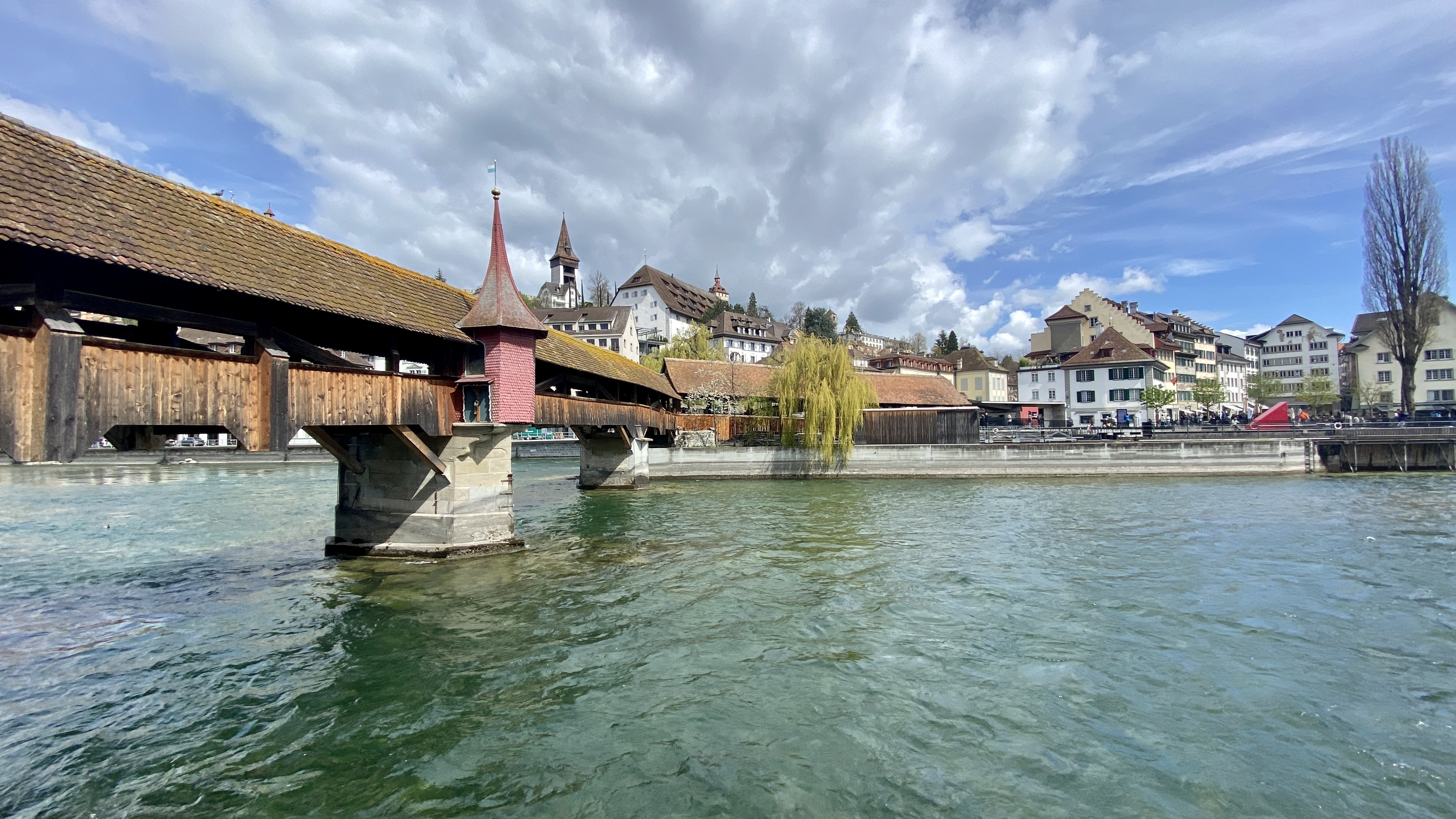
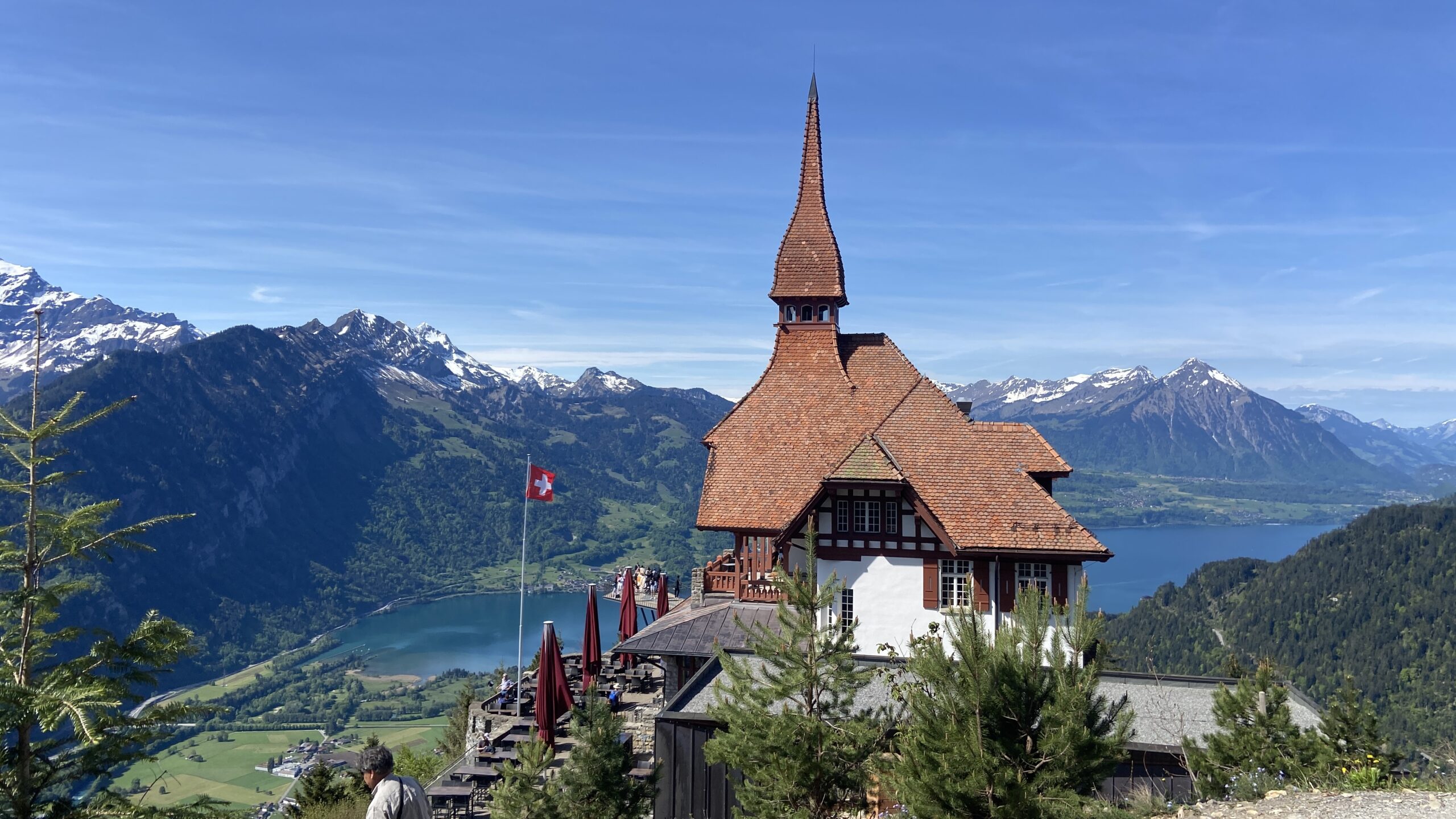
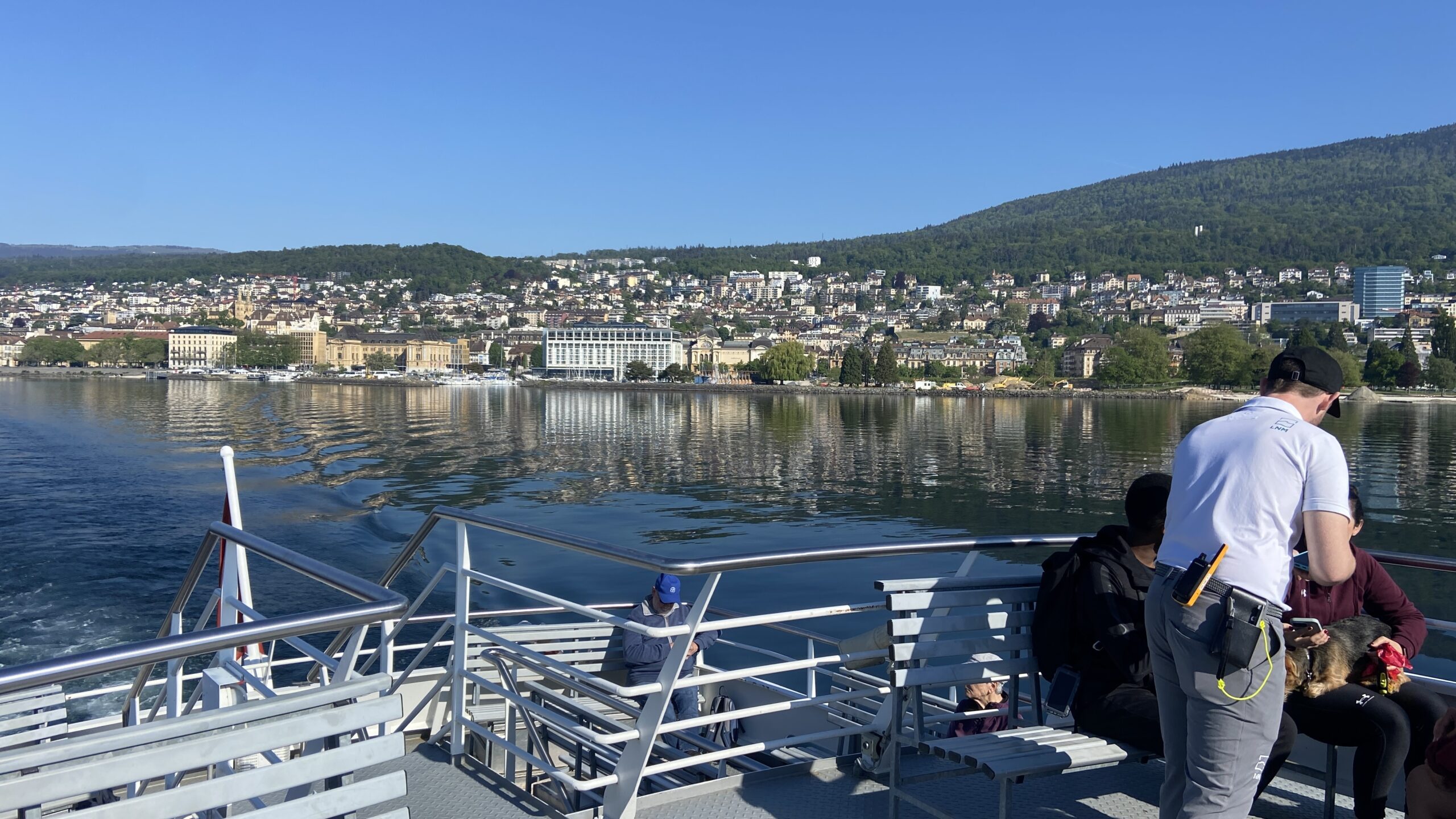
Having said that, there are other times when a Swiss Travel Pass really is the best option for your budget, especially for youth ages 16-24 who can get it at a 30% discount, and you can find the rest of those scenarios listed in our Swiss Train Pass Checklist. And the best part is that it’s 100% free !
But if you value the CONVENIENCE of not having to purchase additional tickets, you will love this pass as long as your itinerary will mostly avoid mountain excursions. Travel between and within cities, towns, and villages is 100% covered all across the country, as are boat rides on the lakes and even those scenic, panoramic train journeys. You could literally fill your itinerary with these without ever buying a single ticket other than your Swiss Travel Pass. (Although, keep in mind that seat reservations are required on those scenic trains, and you will have to pay for those).
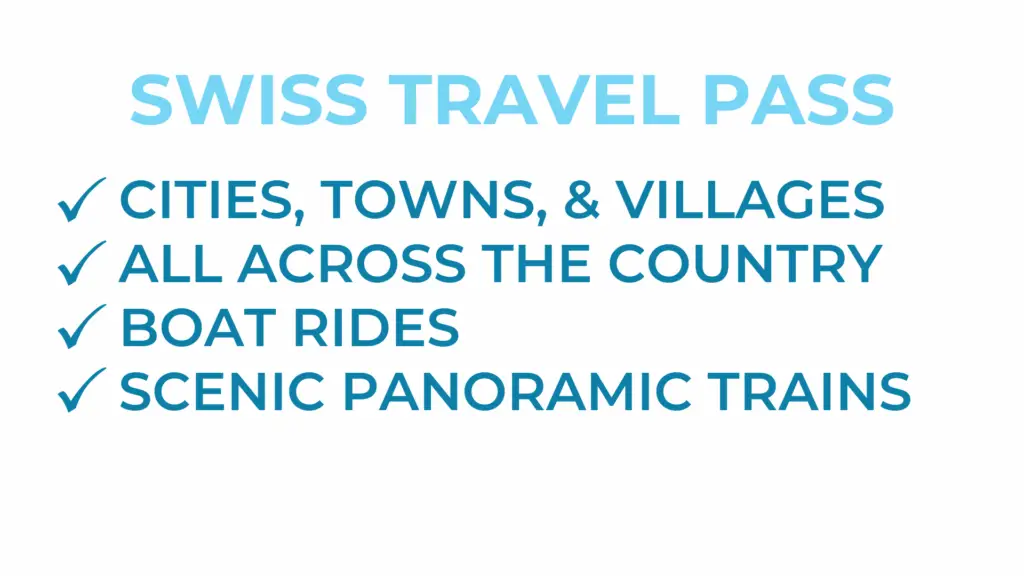
And if you’ll visit multiple regions throughout your trip, especially if you plan to move around frequently, using just one pass — your Swiss Travel Pass — might feel like less of a hassle than juggling multiple regional passes (which we’ll discuss in just a moment).
So if you value SIMPLICITY, a Swiss Travel Pass might offer the ideal balance for you. You’ll enjoy plenty of rides that are fully covered, especially as you travel between those regions, but even when you go into the mountains and need to buy tickets, you’ll only have to worry about understanding how and when this pass works.
It’s worth the reminder, though, that I still believe the Swiss Half Fare Card offers the greatest simplicity of all these country-wide passes.
Eurail and Interrail Passes
So when is a Eurail or Interrail Pass a good buy?
Well, we actually wrote an in-depth blog covering everything you might need to know about using these passes in Switzerland, so instead of listening to us repeat ourselves, be sure to read all about it here if you’re interested.
Day Passes
Finally on the topic of country-wide passes are day passes, and there are two main types: regular Day Passes and Saver Day Passes.
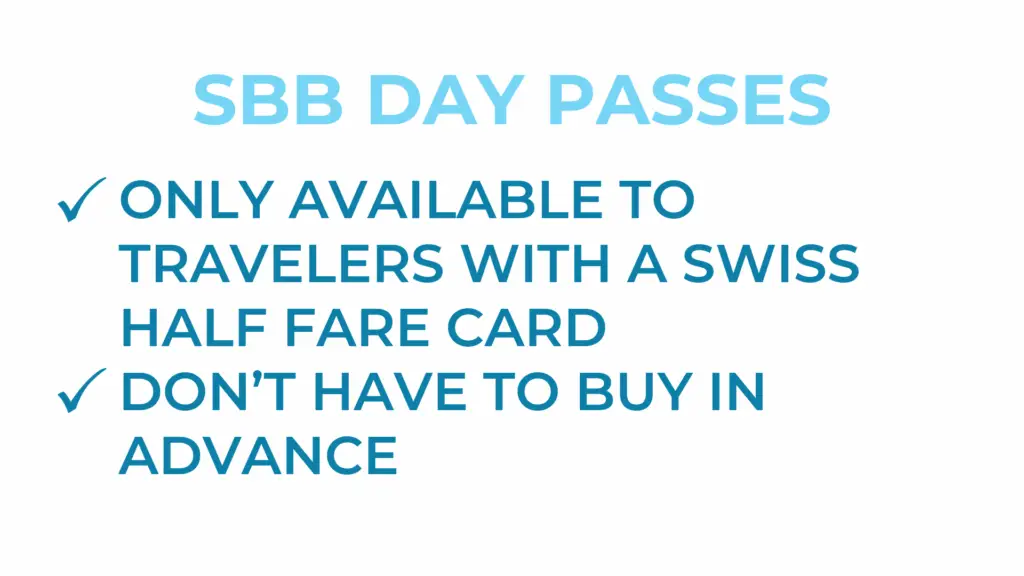
Both types of day passes are valid for a specific calendar day, until the next day at 5:00am. So if you buy one for June 15th for example, you can start using it at midnight on the 15th and all the way until 5:00am on the 16th — giving you up to 29 hours of covered travel.
And both provide you with unlimited travel on any route that is 100% covered by the Swiss Travel Pass. This includes mountain trips to Mt. Rigi and the Stanserhorn near Lucerne, as well as Rochers-de-Naye near Montreux — and that last one isn’t even fully covered by the Swiss Travel Pass!
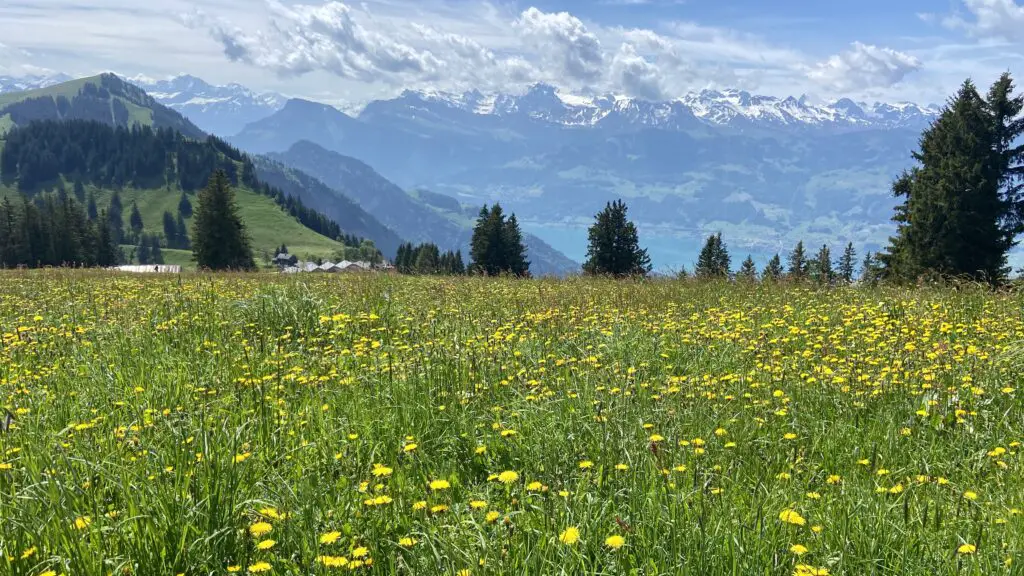
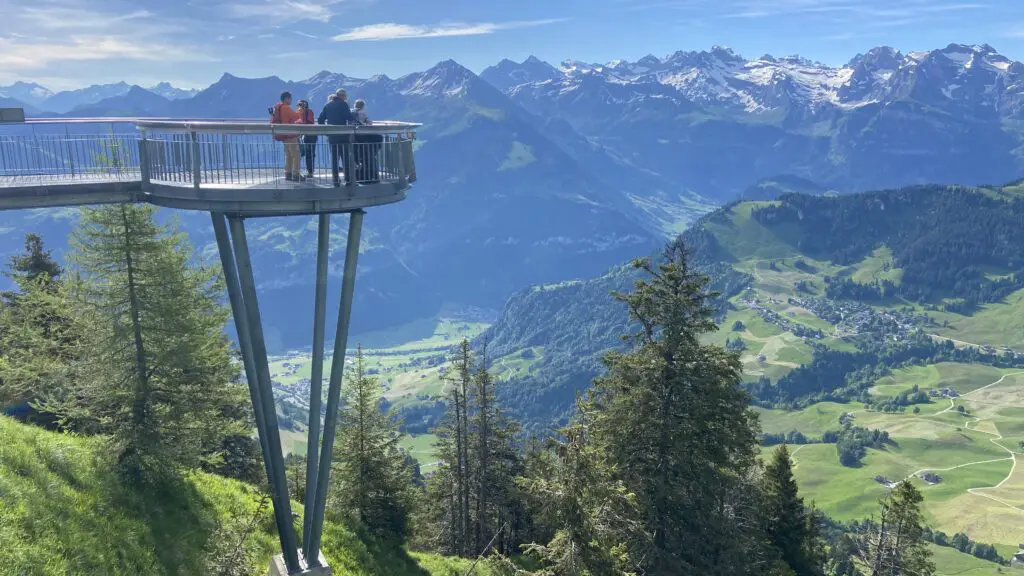

But unfortunately, routes that are only discounted by the Swiss Travel Pass are for the most part not covered or discounted with either of these day passes. So you’ll need to pay full price, or 50% if you’re in possession of a Half Fare Card, in order to travel to Gornergrat in Zermatt, Grindelwald First in the Jungfrau Region, or Mt. Pilatus near Lucerne just to name a few examples.
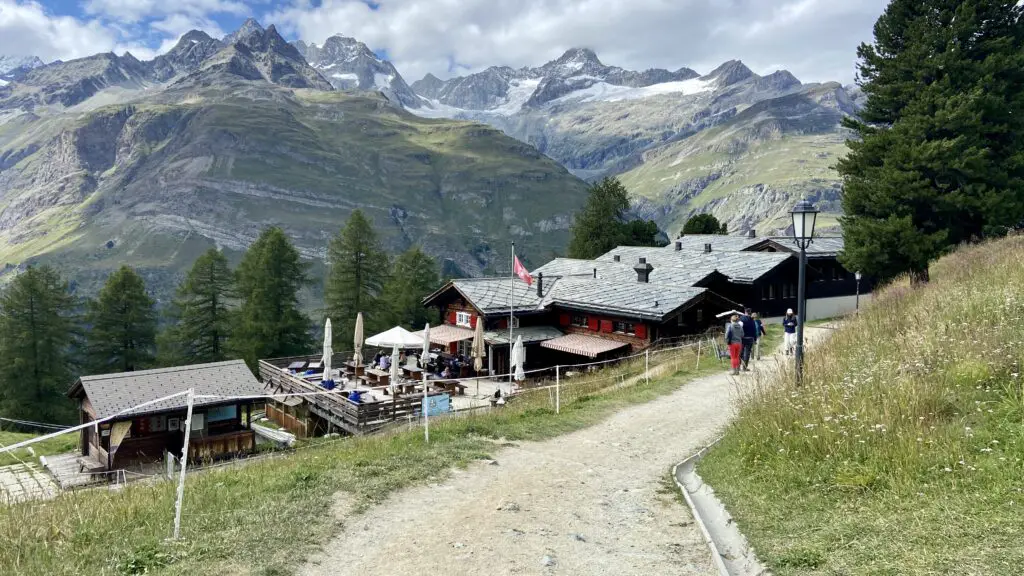
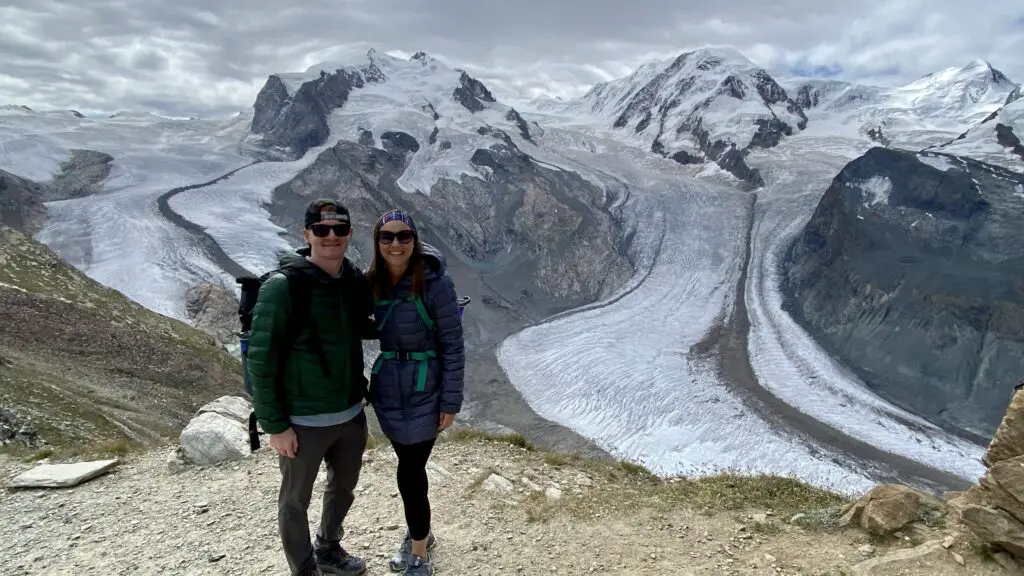
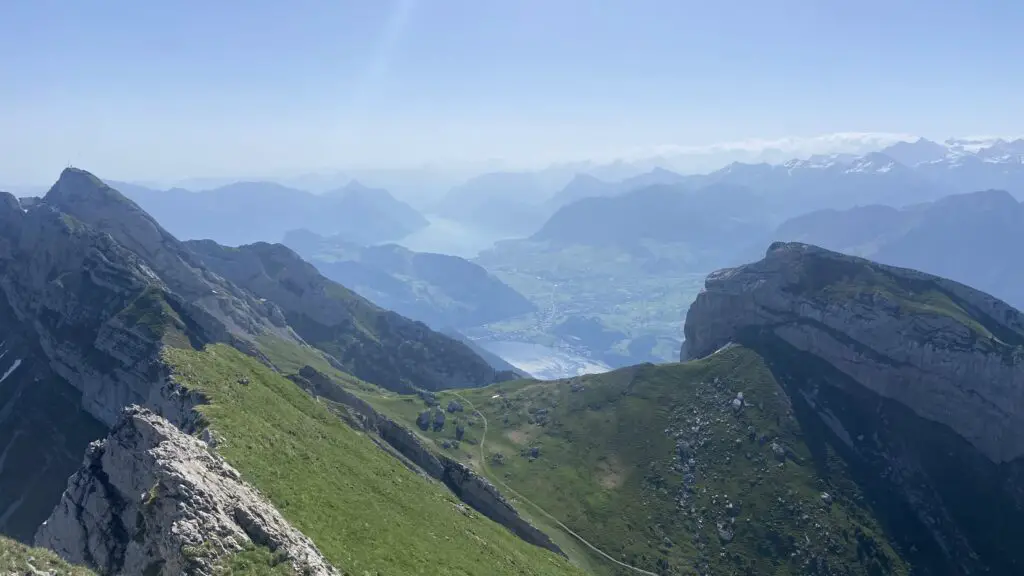
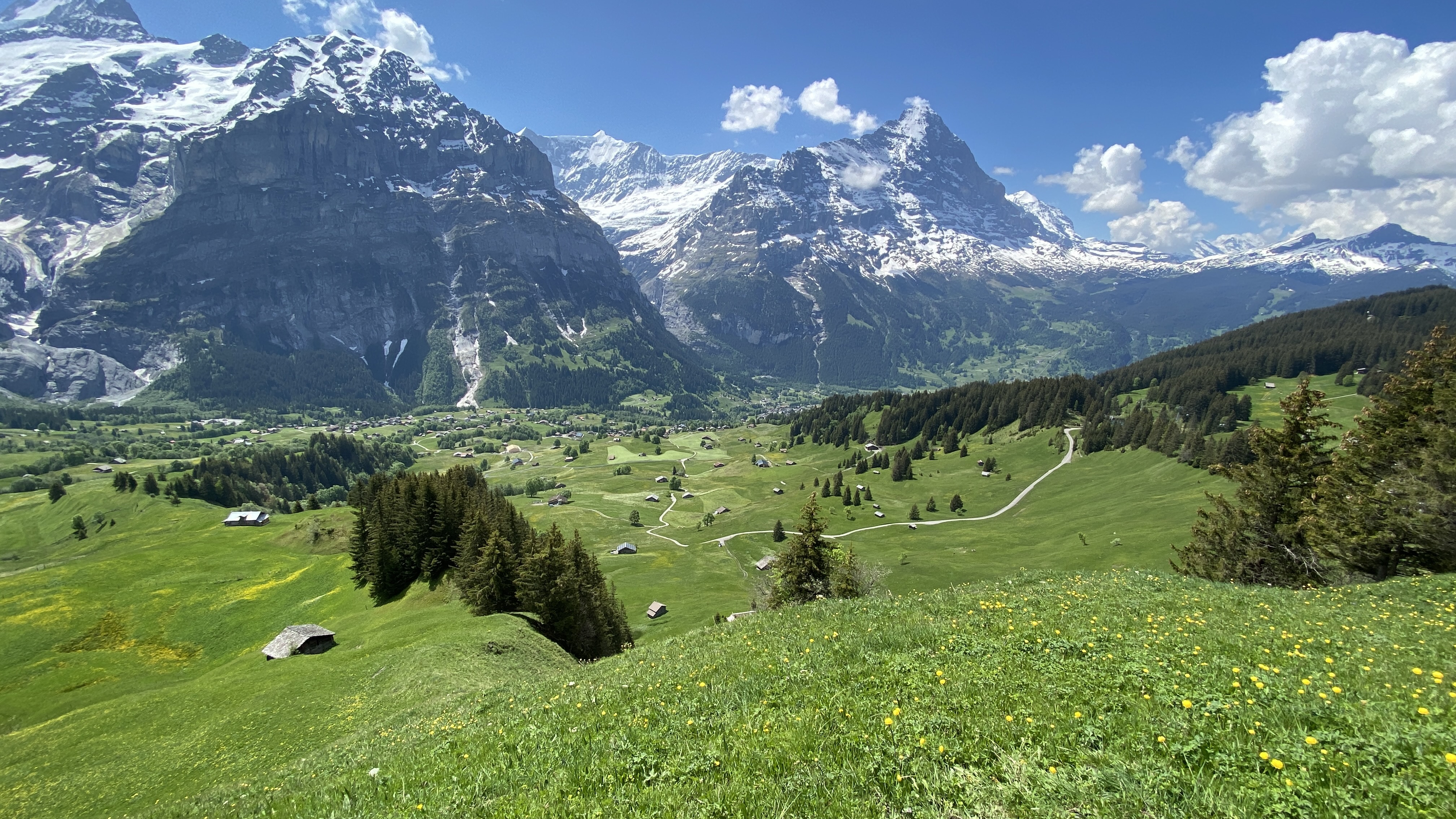
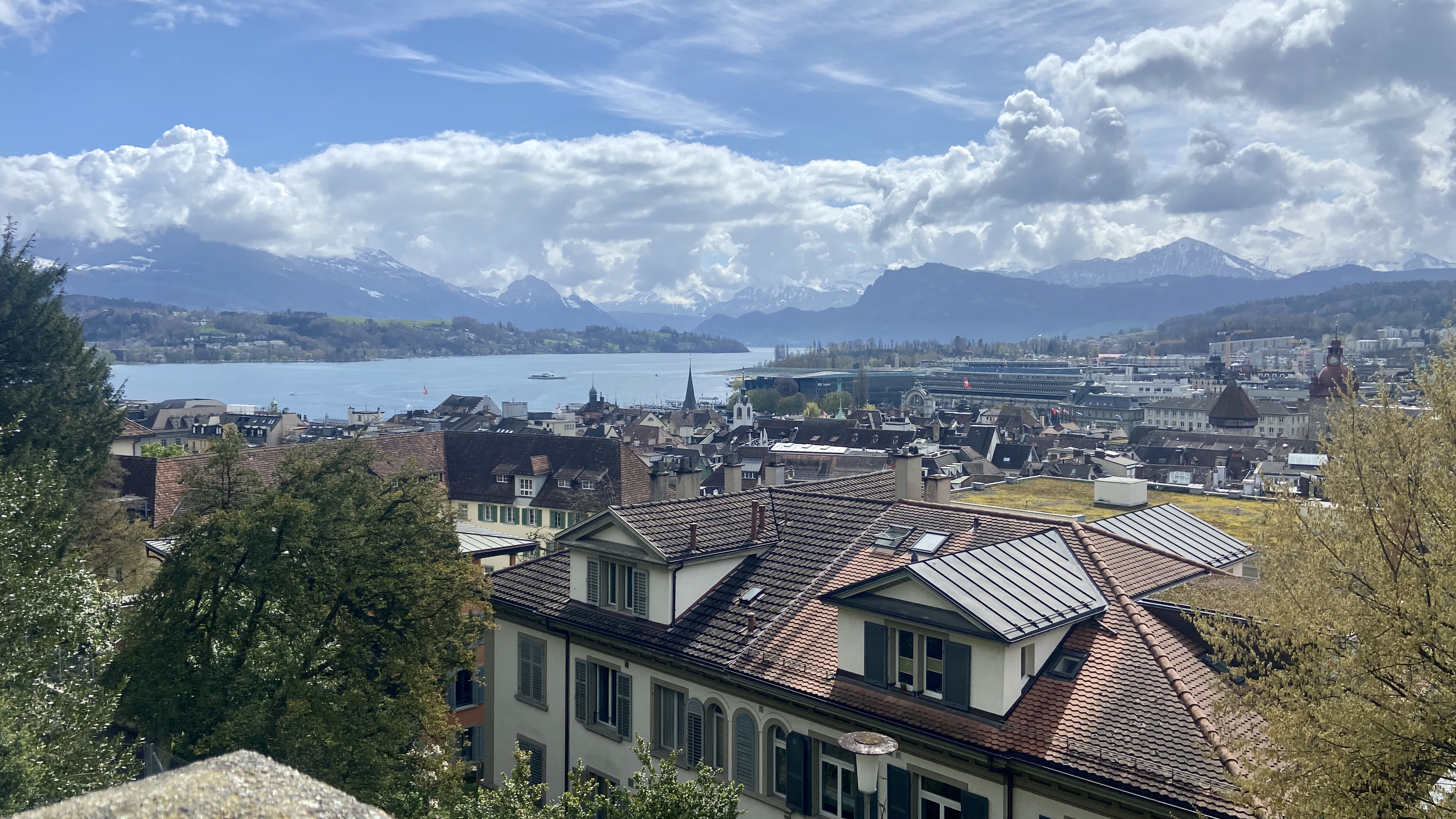
SBB Day Passes
Now the regular Day Pass is only available to travelers who have a Swiss Half Fare Card. And it’s an extremely SIMPLE and CONVENIENT option because you don’t have to buy it in advance. You could just wake up one day, buy it, and ride all over the country for up to 29 hours if you’d like. But it’s really hard to imagine most people with actual sightseeing priorities getting any real COST SAVINGS out of it.
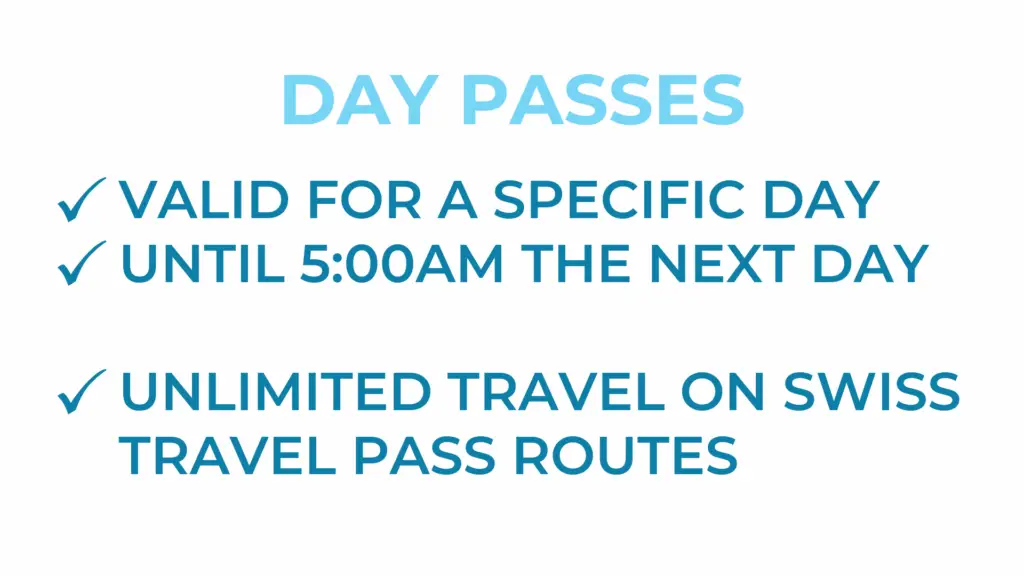
Saver Day Passes
However, the Saver Day Pass is something I highly encourage you to consider planning into your Swiss transportation strategy. Because in the right situation, it can provide a near perfect combination of COST SAVINGS, CONVENIENCE, and SIMPLICITY.
Saver Day Passes aren’t great for traveling within a specific region of Switzerland, but there are other scenarios where they really shine.
- For example, an expensive scenic train ride like the Glacier Express. As you can see here, a Saver Day Pass can shave more than 50 CHF off compared to buying half price tickets, or over 100 CHF compared to paying full price.
- 159 CHF Second Class ticket
- 79.50 CHF Half Fare ticket
- 52+ CHF First Class Saver Day Pass
- Another great use is for an expensive travel day when you’re moving between regions. Say you’re traveling from Lucerne to Zermatt. Once again, you could cut these costs by up to 50% with a Saver Day Pass.
- 122 CHF Second Class ticket
- 61 CHF Half Fare ticket
- 29+ CHF Second Class Saver Day Pass
- But it gets even better if you plan a full day of exploring and then travel to your new destination in the evening. Because these passes work for the full calendar day, you could travel around Lucerne in the morning and afternoon, such as going up to Mt. Rigi (which is covered by the Day Pass), and then leave for Zermatt in the evening. This would cost over 200 CHF full price. So imagine experiencing it all with a Saver Day Pass that cost you just 29 CHF??
Using these examples, you can probably imagine many other opportunities to capitalize on a cheap Saver Day Pass booked far in advance. Personally, as soon as we buy flights to leave Switzerland, we go ahead and buy Saver Day Passes for travel to the airport.
So to summarize, a Swiss Half Fare Card combined with a few strategically selected Saver Day Passes is one of our very favorite ways to blend COST SAVINGS, CONVENIENCE, and SIMPLICITY while traveling Switzerland. However, combining that Half Fare Card with regional passes might be even more strategic. So, let’s get into those shall we?
Regional Swiss Train Passes
Regional passes differ from country-wide passes since they are only valid in specific areas of Switzerland. These are often more mountainous regions, and you’ll usually find that these regional passes provide much better route coverage within their area of validity than the country-wide passes, especially as you go up in elevation.
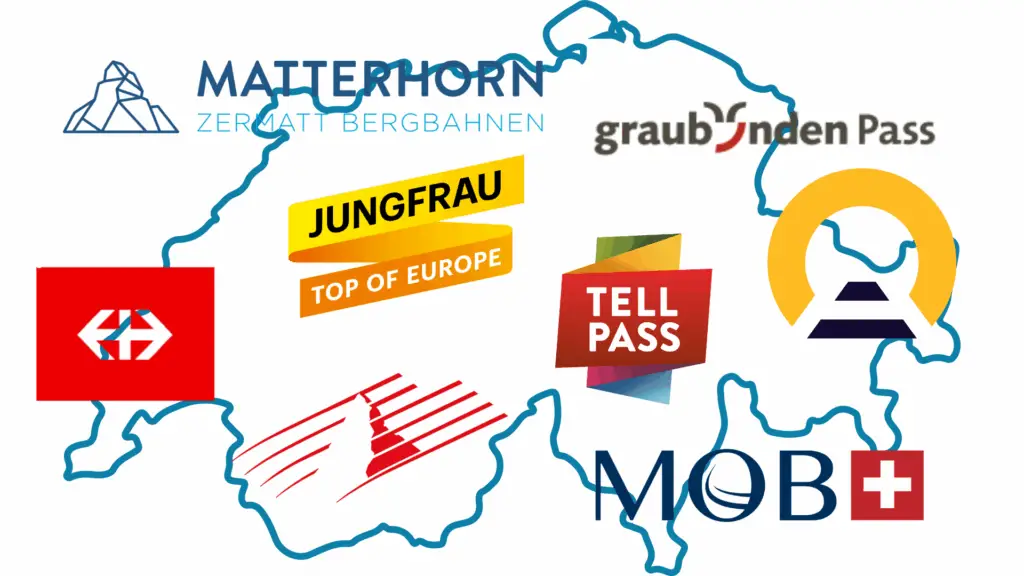
Just like the Swiss Travel Pass, regional passes work as your ticket on any routes that are fully covered, providing free travel to those destinations without requiring any additional tickets.
They can be a great value if you’ll spend enough time exploring the mountains, where ticket prices can equal or surpass the cost of a cross-country trip, and might be a great option for you — whether you value cost savings, convenience, or simplicity!
Regional Swiss Rail Pass Validity Maps
You’re looking at a custom map that I definitely spent way too many hours creating! But I thought it would be helpful to visually show you where regional passes are available, and even where their validity overlaps.
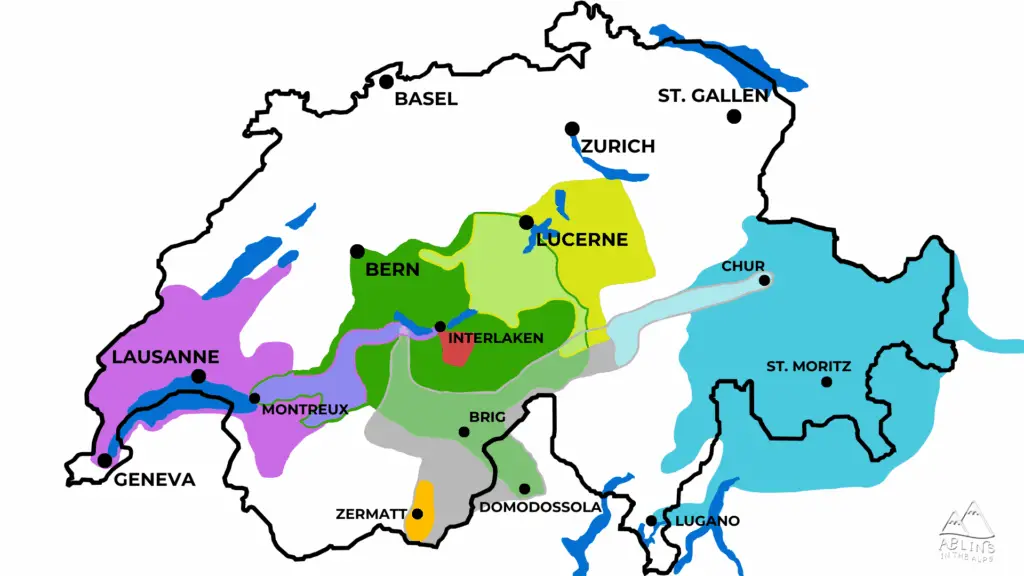
As you can see, large portions of the country can be explored with a regional pass, but there are also plenty of places where no regional pass is offered. It’s worth mentioning, though, that those areas without a regional pass are often much flatter (at least as much as you can refer to anywhere in Switzerland as flat), and as a result, transportation costs aren’t nearly as high.
I’m going to show you which train pass each color represents very soon. But first, you might assume that a larger validity area automatically makes a train pass more valuable. But as we already touched on with the country-wide passes, that isn’t necessarily the case.
The real value of a train pass comes down to a few factors:
- Size and scope of the validity area (So basically, how many destinations can be reached.)
- Route coverage within the validity area (Essentially, when does the pass fully cover a route, only provide a discount, or give no discount at all?)
- Potential cost savings (Which comes down to how expensive or affordable the routes within the validity area are.)
- Finally — and most importantly — your travel plans. A train pass will have zero value to you if you aren’t planning to visit any destinations within its area of validity — even if it can get you to lots of places.
So let’s go through the regional passes shown on this map and take a look at what they can offer you.
Lucerne And Central Switzerland: Tell-Pass
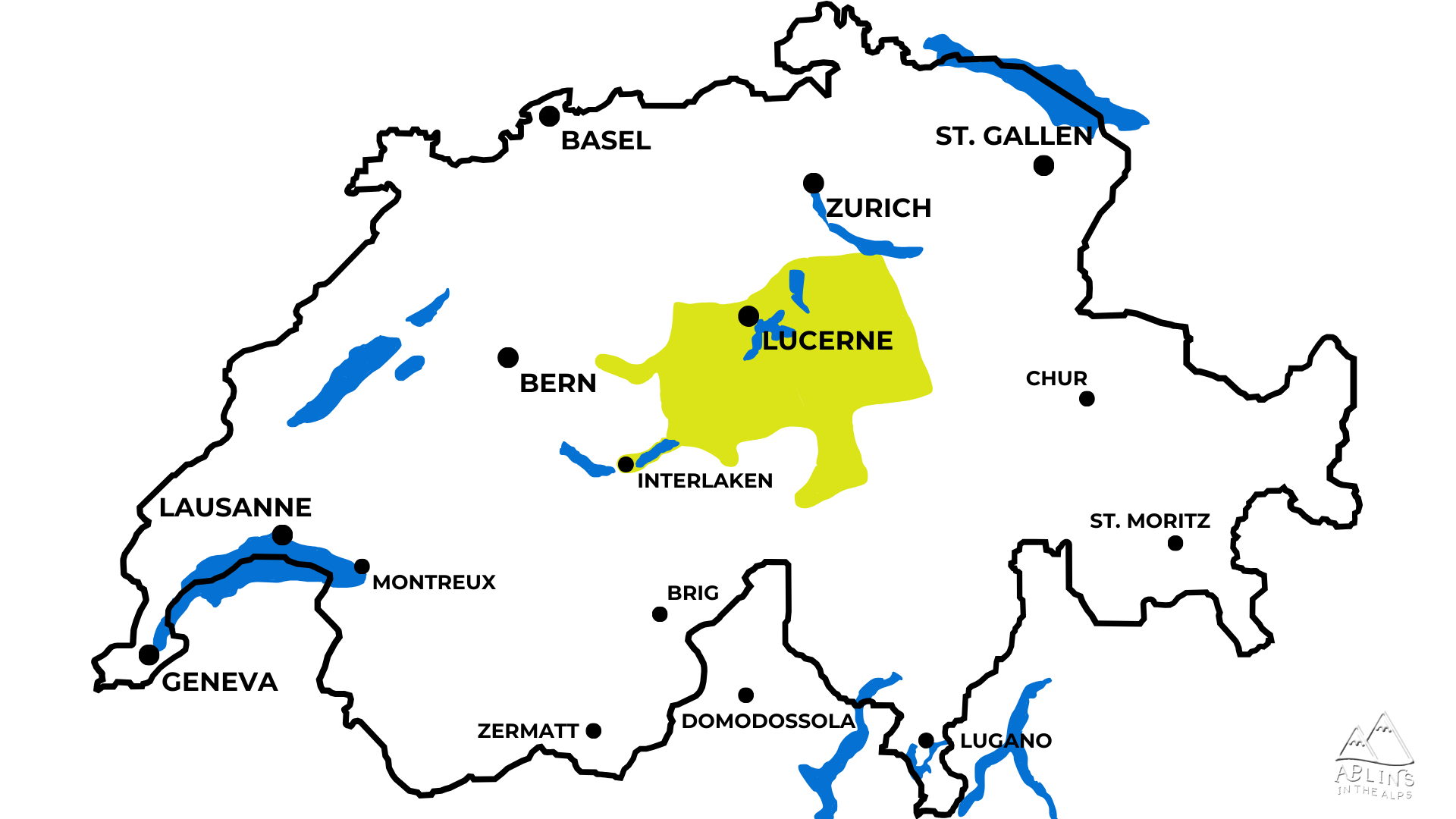
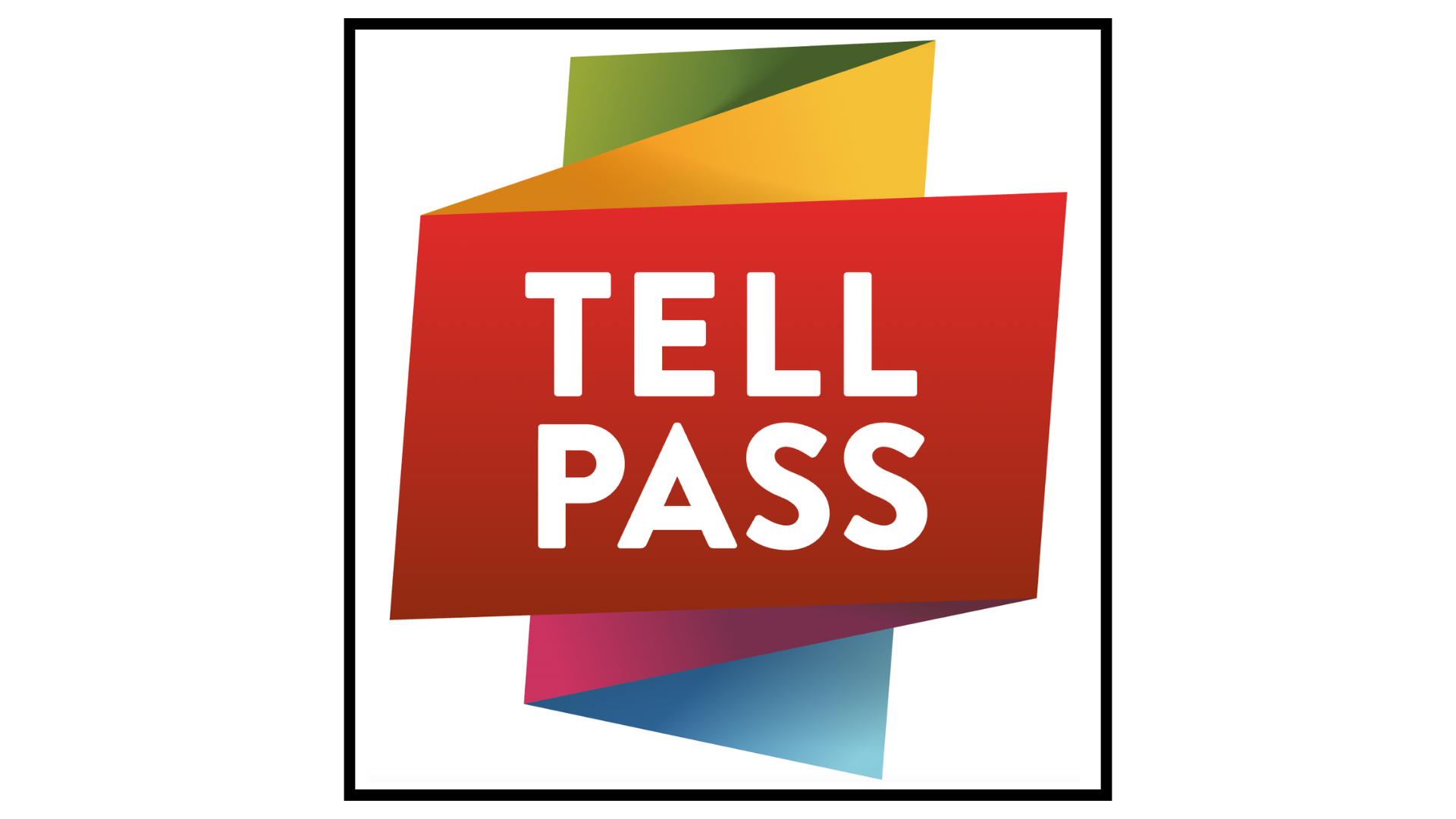
Let’s start with this yellow region, which is the validity area of the Tell-Pass. The Tell-Pass is perfect for trips to Lucerne and Central Switzerland, and the pass we used last summer when we spent a few weeks in this region because the validity area is huge and the route coverage is unbeatable. You’ll have a really hard time finding any transportation within the validity area that isn’t fully covered by the Tell-Pass:
- Mt. Pilatus? 100% Covered
- Mt. Rigi? Yep, any of the 9 possible ways to get there.
- And so are Mt. Titlis, the Stanserhorn, and Stoos (including the chairlifts that take you up to the Stoos Ridge Hike).
- But all the normal trains throughout the area are fully covered too, as are buses, and boats on Lake Lucerne and a few other lakes.
- And there are also lots of other cool rides that you might be surprised are covered, such as the Ice Flyer chairlift over the glacier up at Mt. Titlis and The Luzern-Interlaken Express scenic train ride between, well, Lucerne and Interlaken.
All of that means that the Tell-Pass is perfect for those of you visiting this region who value CONVENIENCE and SIMPLICITY.
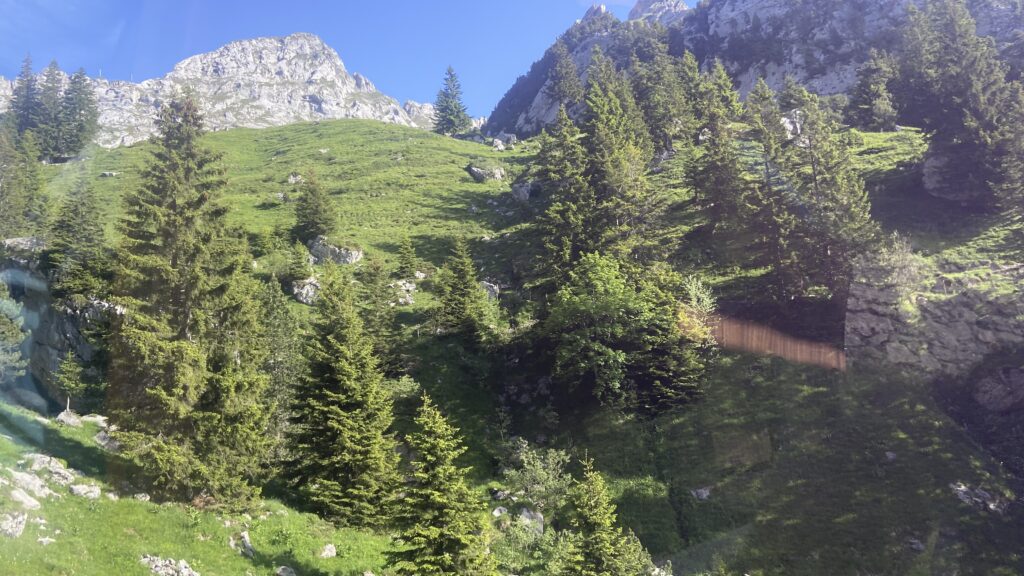
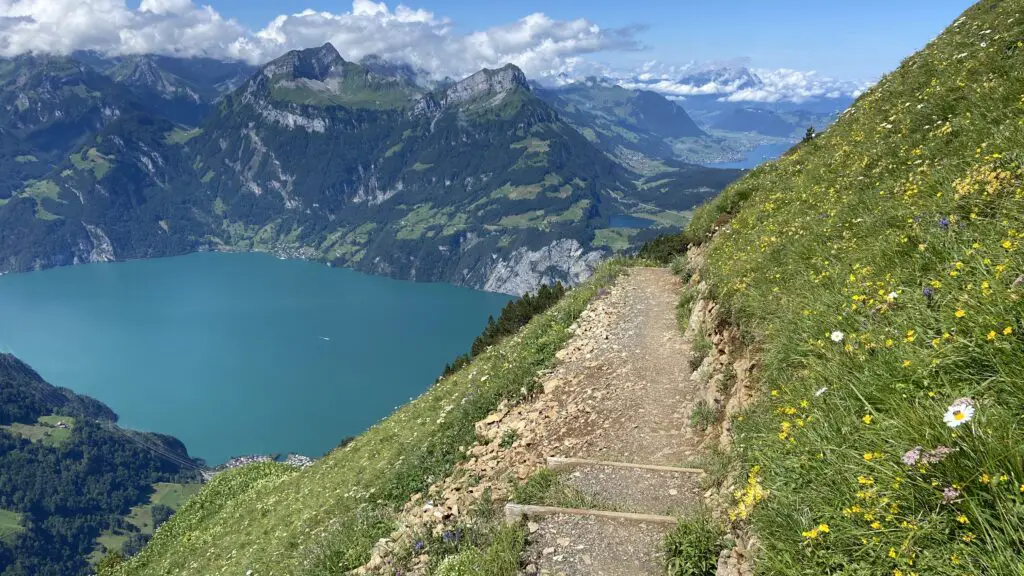
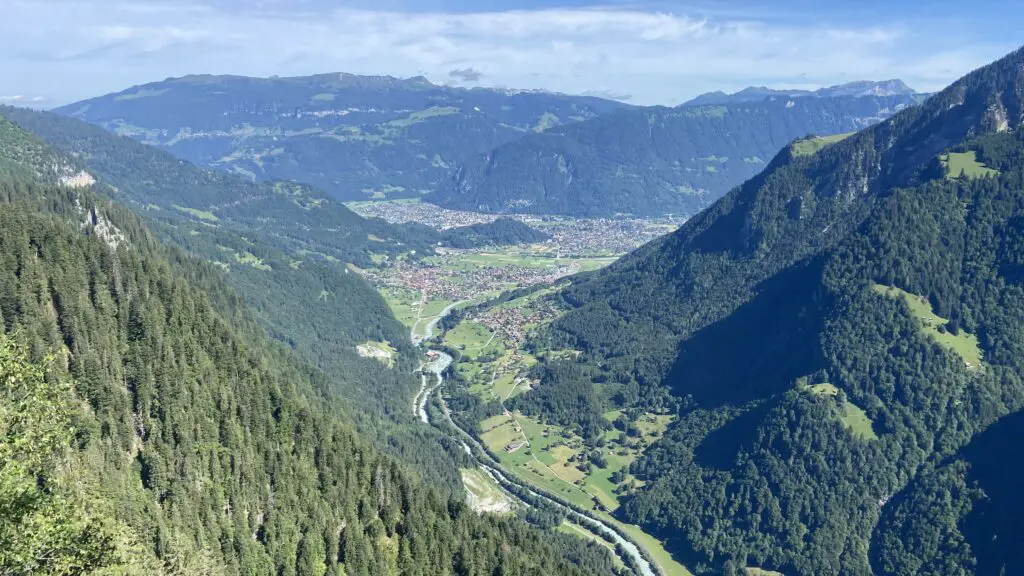
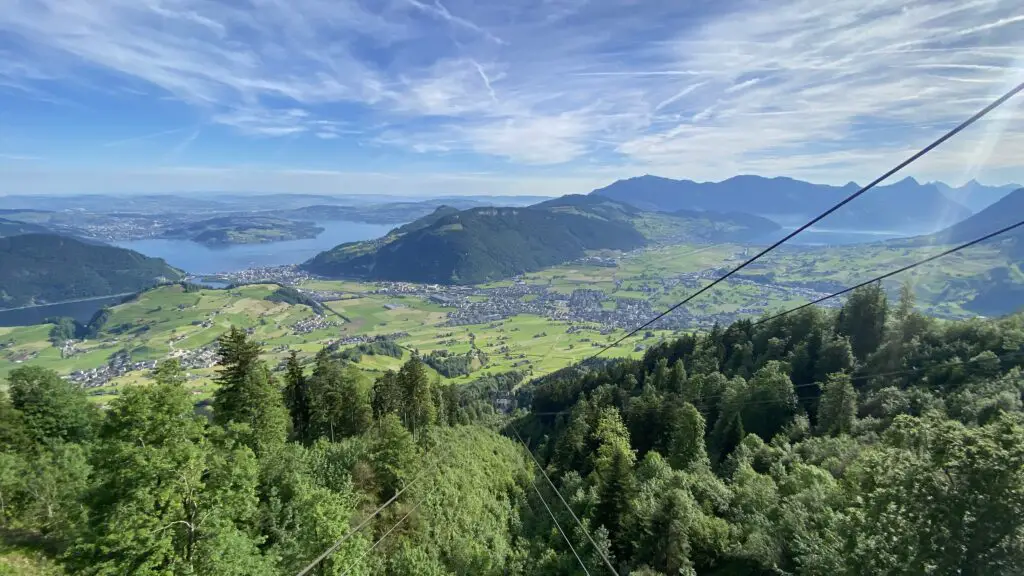
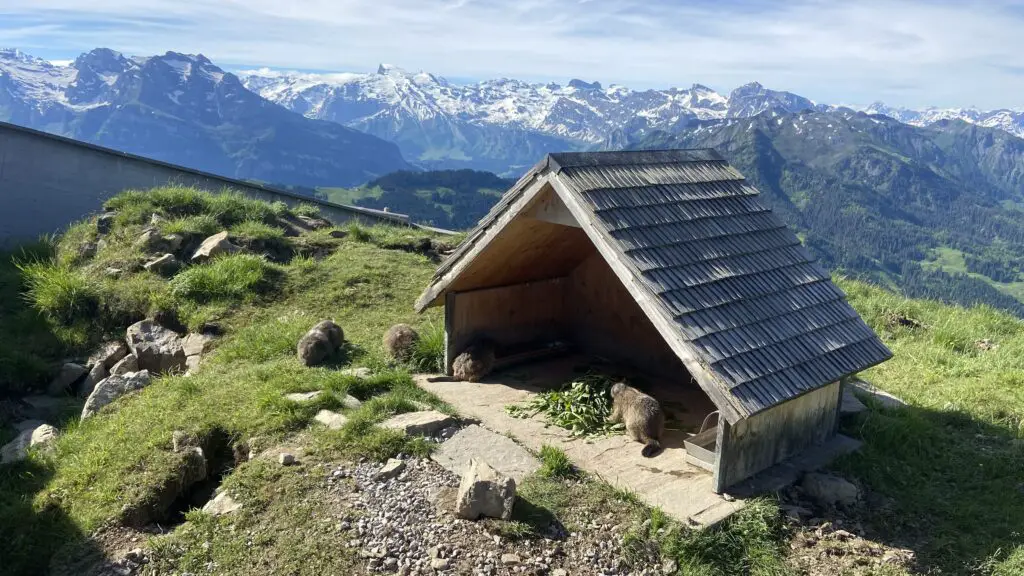
And if you have our Lucerne Day Trips Guide, you know that the average cost of full price transportation tickets for each of the daily itineraries is 125 CHF. So if you’re coming to Central Switzerland largely for the experiences in that guide, this pass will be HUGELY valuable to even the most BUDGET conscious among you!
But even if you don’t have one of our guides and the custom train pass recommendations that come along with each of them, you can still pick your Swiss Train Pass with confidence using our step-by-step checklist.
For example, let’s say you’re spending 1 week in Interlaken and 2 days in Lucerne. You’ll start by selecting the Jungfrau + Lucerne link, then scrolling down to the section that fits your itinerary. Next, read through the options based on budget or convenience. There you’ll find your train pass recommendation!
Talk about Swiss Transportation made EASY. The Checklist even includes links so you can buy your pass at the click of a button. We love hearing how our train pass advice saves you hundreds of Swiss francs. And an easy way to say thank you if this advice has been helpful is to buy through our recommended links where we get a small commission at no cost to you.
Jungfrau Region: Berner Oberland Pass
But our free checklist covers more than just Central Switzerland, so let’s move toward the mountains of the Berner Oberland and talk about the Berner Oberland Pass, represented by this green area.
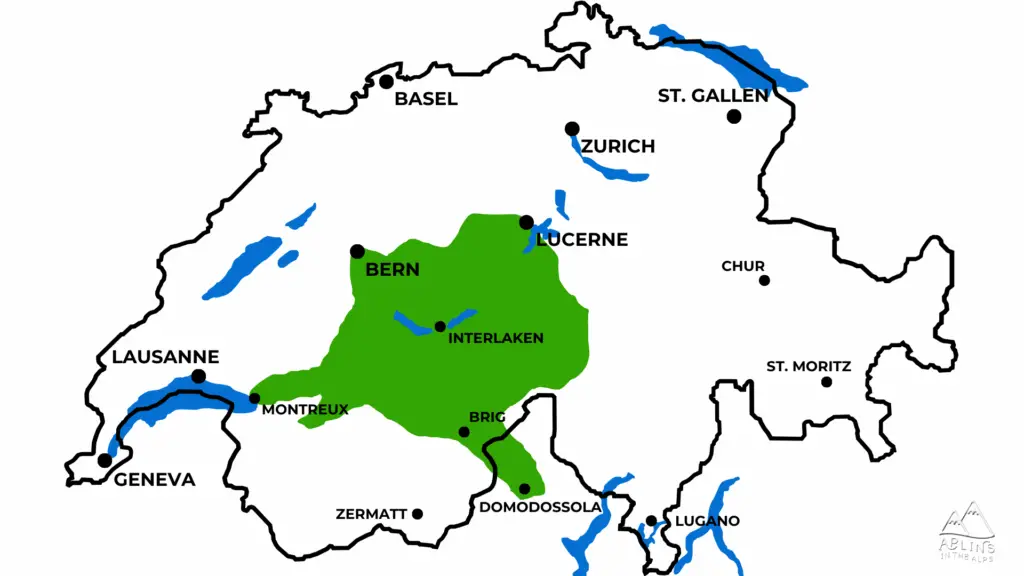
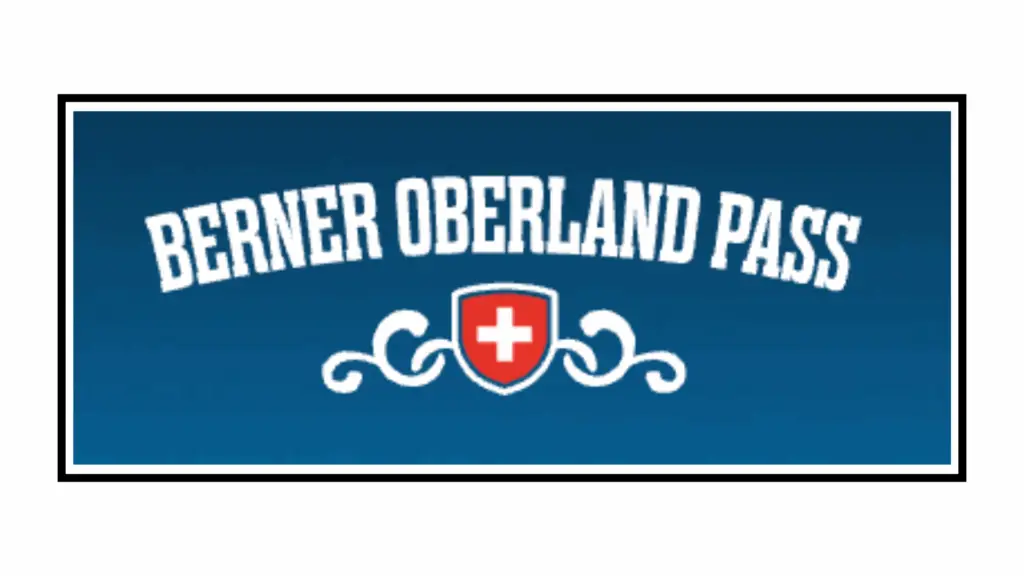
The area of validity for this pass is even bigger, and reaches some wildly popular spots that you’ve likely included in your Swiss itinerary: Bern, Lucerne, Montreux, Interlaken, Lauterbrunnen, Grindelwald, Wengen, Mürren — and that’s just a start! You can take boat rides on Lake Brienz and Lake Thun, reach over 25 mountain destinations at no additional cost, and travel all the way to the Italian border in Domodossola. Of those 25, a few like the Brienzer Rothorn or Schilthorn cost around 100 CHF for a full price ticket, which is why this regional train pass is so valuable.
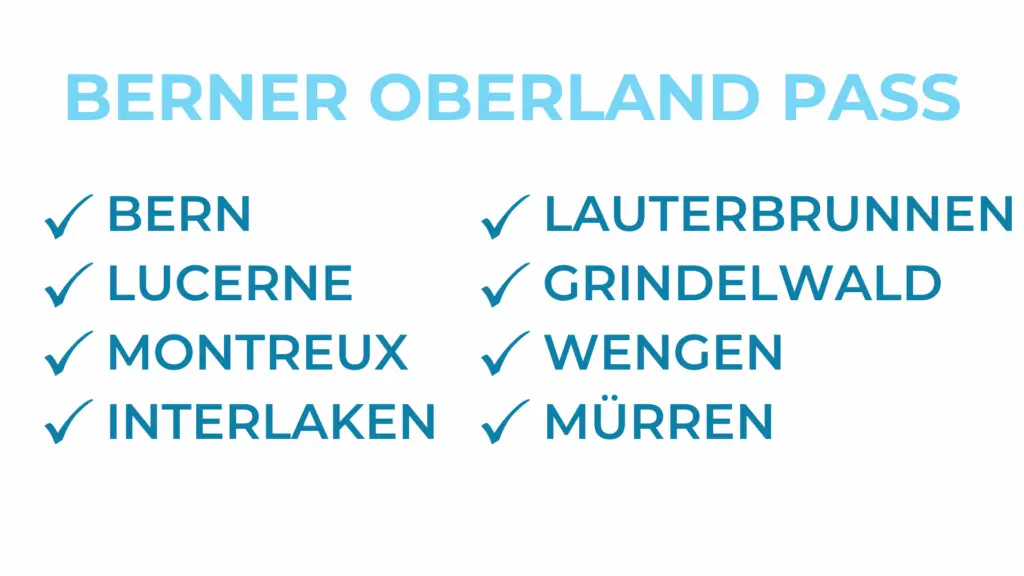
And while we are completely in love with the Berner Oberland Pass, it is by no means perfect. In fact, the weakest route coverage is found in the Jungfrau Region near Interlaken, where this pass will sometimes only provide you with a 25-50% discount on mountain excursions.
So before we can talk about when it makes sense to choose this pass, we need to discuss one more train pass that can also be used here.
Jungfrau Region: Jungfrau Travel Pass
This red area shows the validity of the Jungfrau Travel Pass. As you can see, it’s very small compared to the Berner Oberland Pass, so this is not the pass for taking lots of day trips outside of Interlaken.
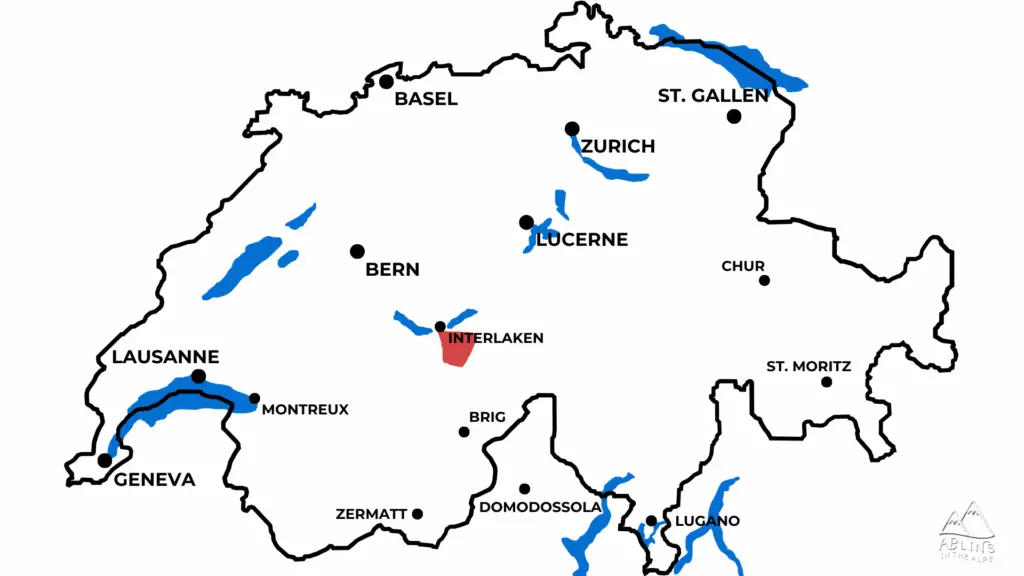
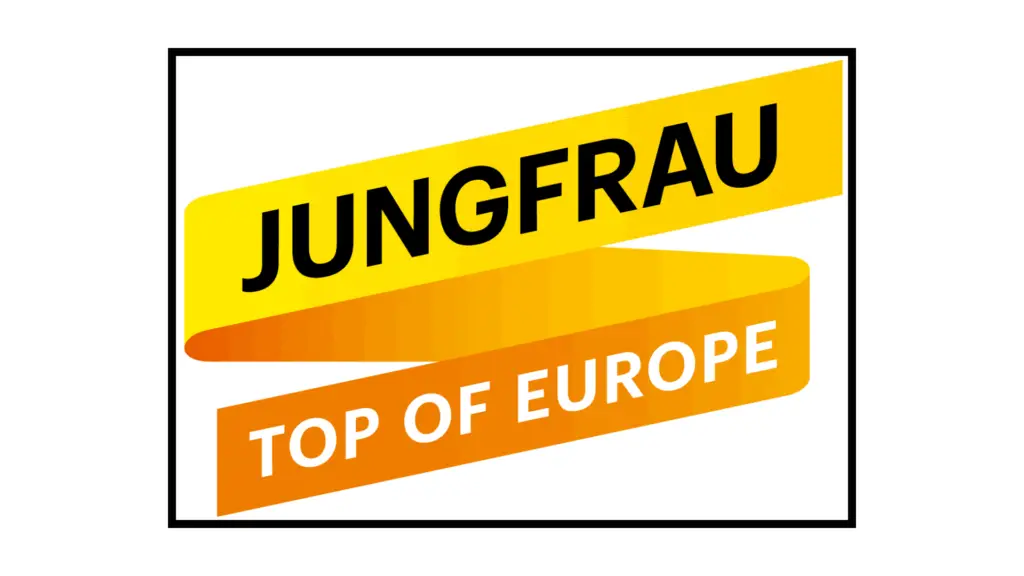
But what it does, it does extremely well, providing free travel to some of the most popular hotspots in the region: Interlaken, Grindelwald, Lauterbrunnen, Wengen, Mürren, and mountain excursions such as Grindelwald First, Harder Kulm, and all the way up to Kleine Scheidegg and Eigergletscher — the last stations before you would continue up to Jungfraujoch.
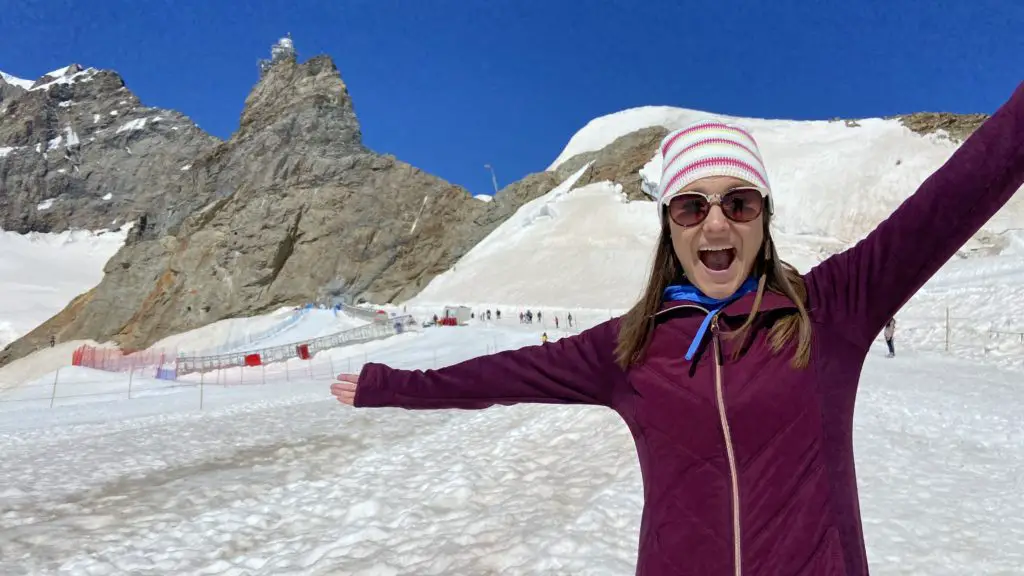
Most importantly, those mountain excursions are the exact ones that would only be discounted with a Berner Oberland Pass.
But truthfully, my spreadsheet reveals that the Jungfrau Travel Pass is usually best for trips shorter than 5 days focused on the destinations it fully covers, while the Berner Oberland Pass is better for longer trips and those looking to explore a bit further from Interlaken.
Now there is a ton of overlap between these two passes. We won’t get into those because we actually made a video that explains in great detail the similarities and differences between these two passes. So be sure to watch that to fully understand where each pass performs best.
But for what it’s worth, we actually recommend within our 1-Week Guide to the Jungfrau Region that you buy the Jungfrau Travel Pass for a few days of the itinerary and the Berner Oberland Pass for the rest, in order to experience the best blend of COST SAVINGS and CONVENIENCE.
And perhaps this is a surprise to some of you, but combining these regional passes with the Swiss Half Fare Card is almost always a no-brainer. The Half Fare Card costs 120 CHF. But it gives you a discount on both of these passes, and if you’re traveling to the region from a Swiss airport, you’d enjoy a 50% discount on that journey too. So just these two things alone will undoubtedly save you money — and all you had to do was buy a Half Fare Card!
Principles For Traveling With A Swiss Train Pass
Now, there are a few important principles to keep in mind when you’re considering a regional pass, or really any other train pass for that matter:
First, transportation in Switzerland is probably more expensive than you think! Especially if you’re looking at individual rides.
The average cost of a full price, roundtrip mountain excursion in the Jungfrau Region is 87 CHF — and that doesn’t even count the additional cost of getting to the cable car station! So a 3-day Jungfrau Travel Pass could easily pay for itself if you’ll do even just one expensive mountain excursion per day.
Our second principle is that it’s the cost per day, not the total cost, that matters most.
That 3-day Jungfrau Travel Pass costs an average of 70 CHF per day. But an 8-day pass is just 41 CHF per day.
Many of you are unknowingly causing your trips to be more expensive than they need to be by moving way too quickly throughout the country. And this principle applies not just to transportation, but also lodging and maybe even food, too. So if you’re only staying in a region for just a few days, the Half Fare Card might be better than a regional pass for those who value cost savings.
Third, instead of choosing a pass to fit your itinerary — consider flipping it! Pick the pass first, then build your itinerary around it.
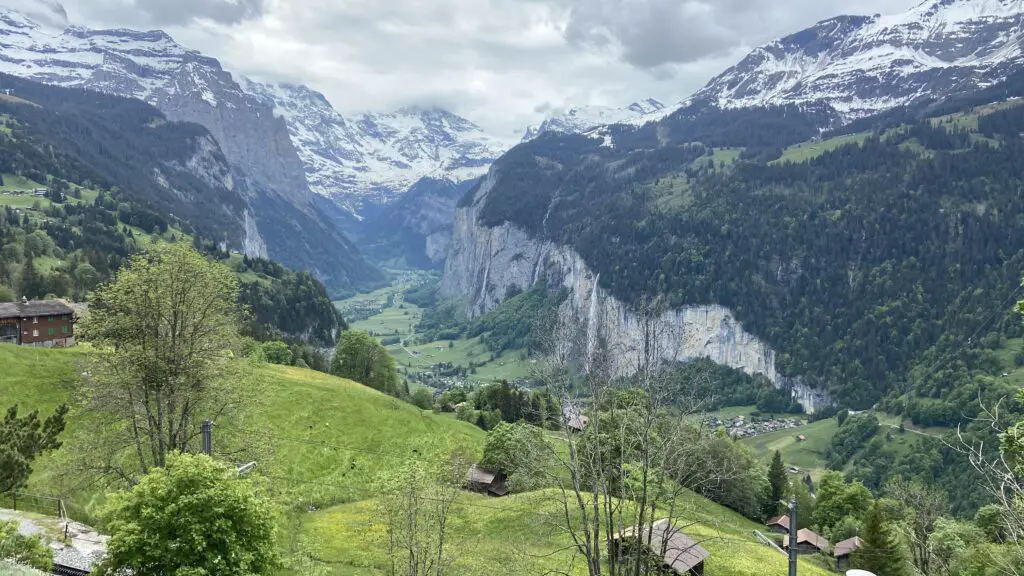
With a 10-Day Berner Oberland Pass, you could take day trips to Lucerne and Bern, and a day trip to Montreux on the GoldenPass scenic train, visit the Schilthorn, scope out the views from Männlichen, enjoy a boat ride on Lake Brienz and ride the steam train to the Brienzer Rothorn, cruise on the summer toboggan and flyline at Grindelwald Pfingstegg, hike above the teal blue waters of Oeschinensee, see ibex on the Niederhorn, and get to the Italian border on your way out of Switzerland. And all of these trips would be covered!
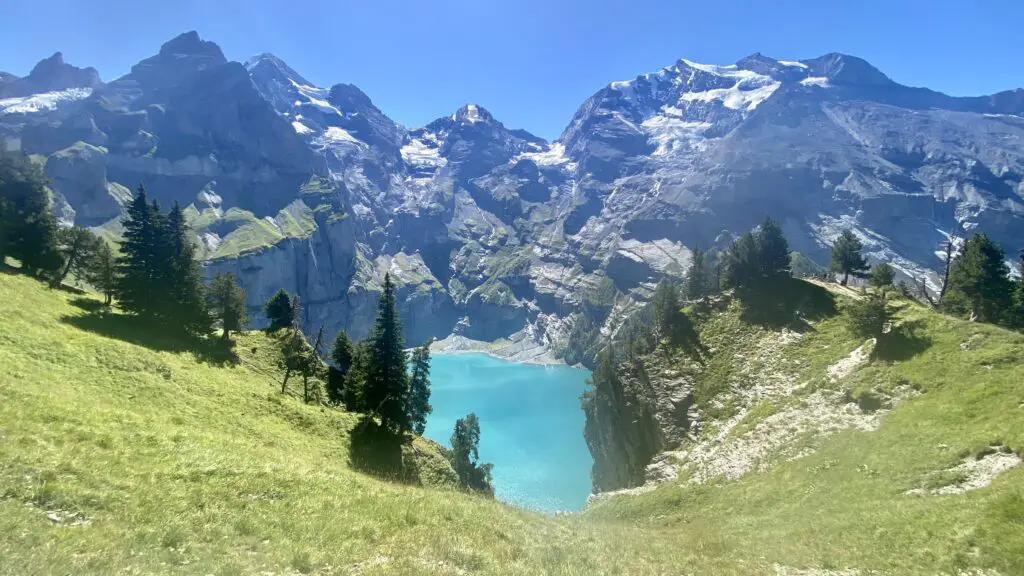
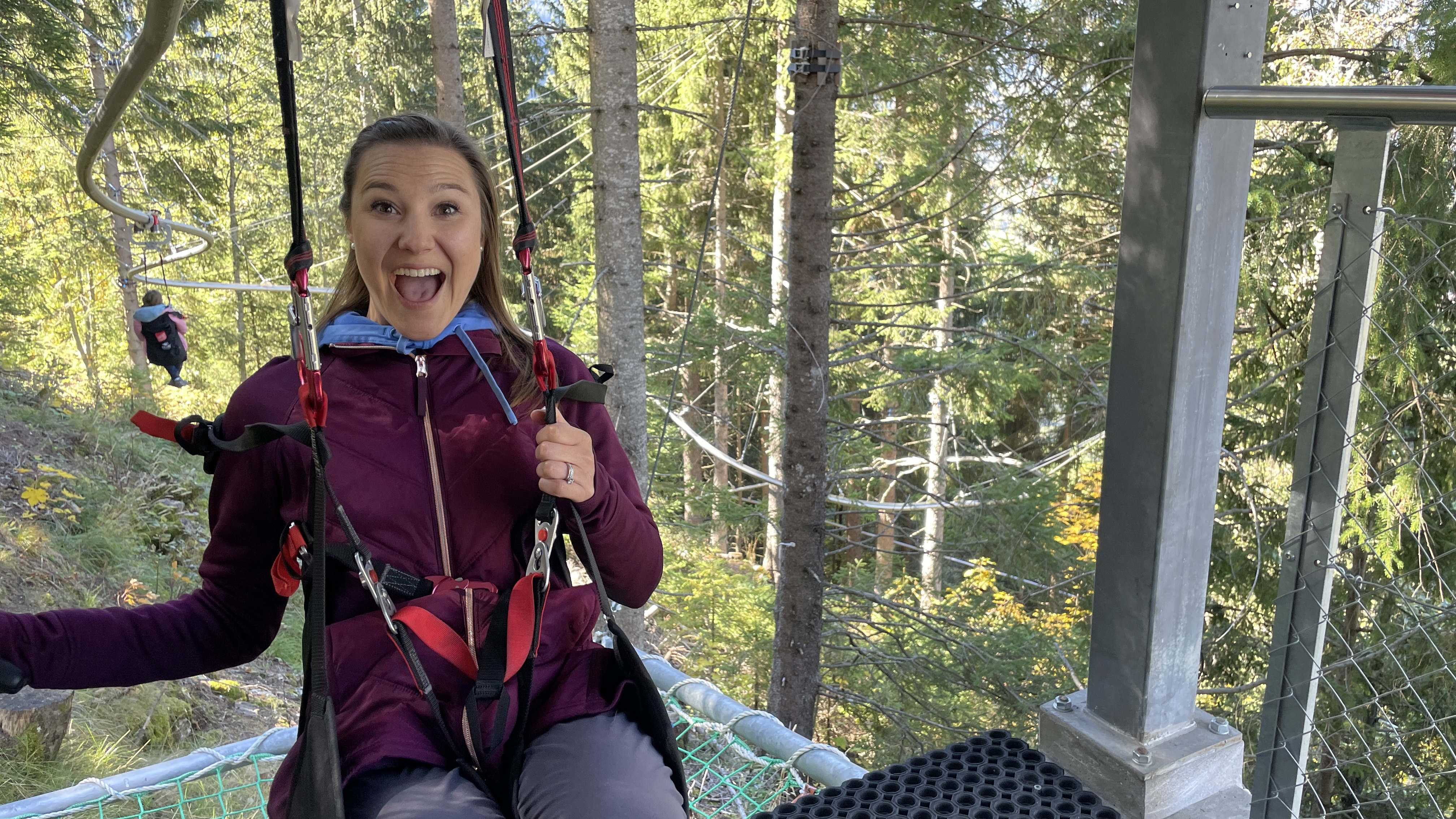
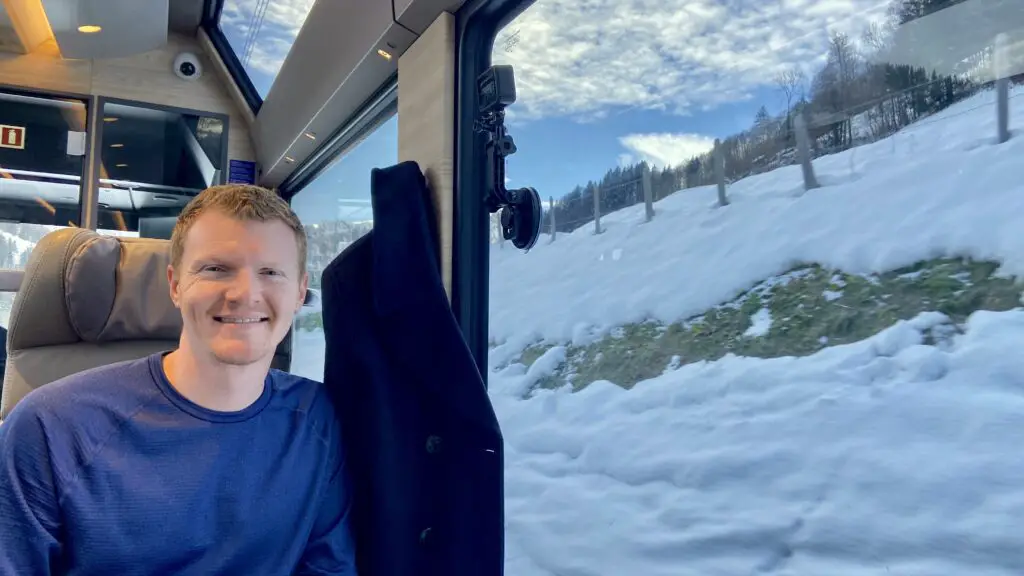
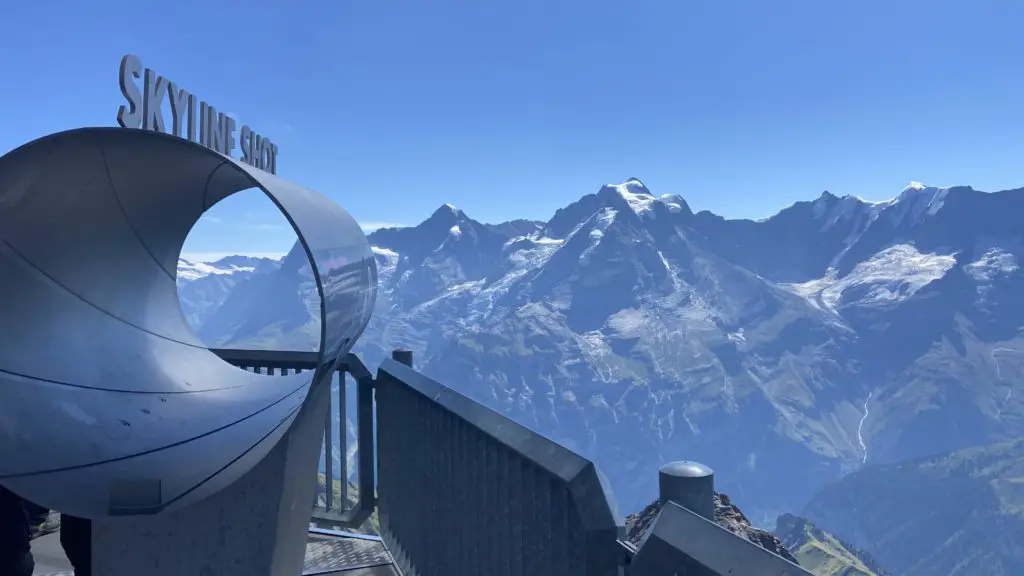
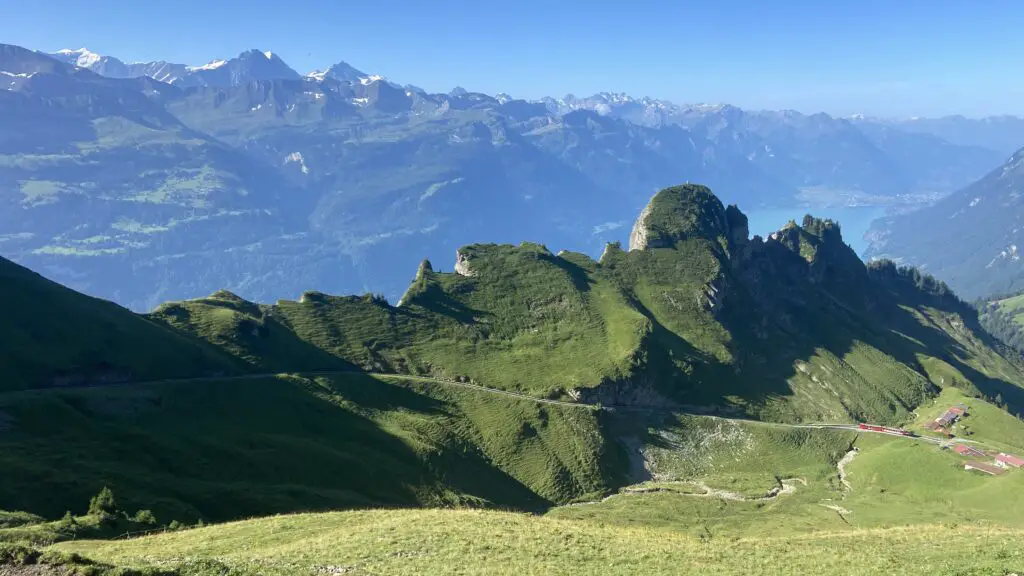
The alternative without the Berner Oberland Pass? Over 900 CHF in full-fare tickets. Ouch!
Or for what it’s worth, you’d spend over 200 CHF more to do this trip with a Swiss Travel Pass than with a Berner Oberland Pass. And you’d be buying tickets on 6 of the 10 days I just mentioned, as opposed to zero tickets with the Berner Oberland Pass.
Now this is clearly just an example to illustrate the power of all three principles I just outlined, but it would offer a perfect combination of COST SAVINGS, CONVENIENCE, and SIMPLICITY. And while we absolutely LOVE the Jungfrau Region (we live here after all!), there are endless amazing experiences to be had throughout lesser-known parts of the stunningly beautiful Berner Oberland.
But that 10-day example I just shared accounted for a pretty big mountain excursion or day trip every single day. That’s a good way to maximize the value of a pass, but it’s also a pretty good way to guarantee that you end your vacation in dire need of another vacation!
So the fourth principle is that travelers with a slower pace, for example, less than one big mountain excursion or day trip per day, will probably not see COST SAVINGS from a regional pass. That’s because while the average cost of a mountain excursion is 87 CHF, the average roundtrip cost of going from Interlaken to Grindelwald, Lauterbrunnen, Wengen, or Mürren is less than a third of that — just 27 CHF full price. Feel free to choose a regional pass even if you’re traveling slowly if you highly value CONVENIENCE or SIMPLICITY, but it probably won’t make sense for your budget.
Additional Regional Train Passes
For most of you, these three regional train passes — the Tell-Pass, Berner Oberland Pass, and Jungfrau Travel Pass — are the only regional passes you’ll need to consider for your trip to Switzerland. But you might be wondering what’s the best solution if your trip combines multiple regions? This is where our free Checklist really shines.
You can look up your combination of chosen destinations and find our exact recommendations. And we’ve even included separate suggestions based on the number of days you’ll be visiting, your age, and whether you’ll be traveling by car or by train.
But I’d like to mention 4 more regional passes real quick.
Zermatt: Peak Pass
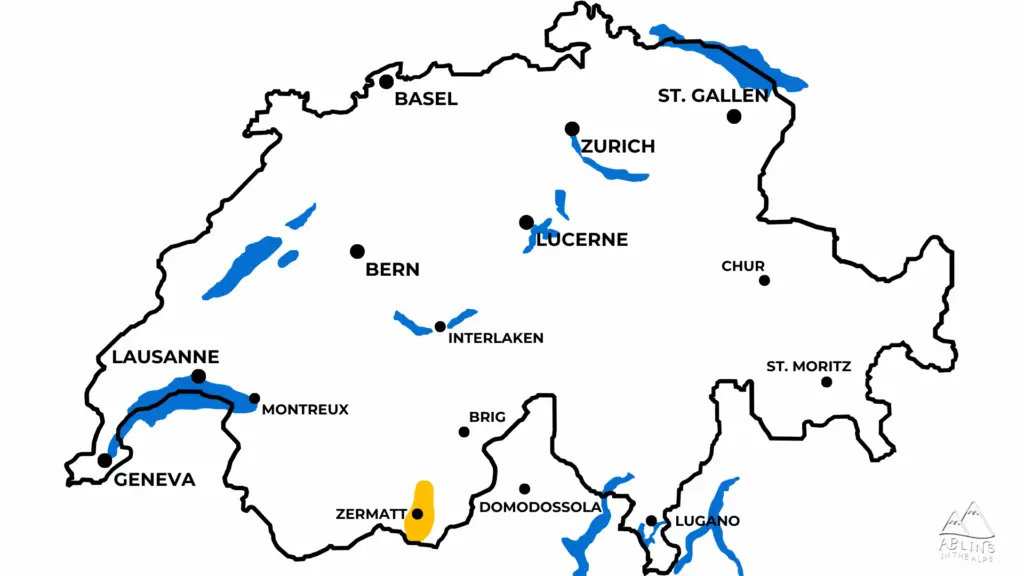
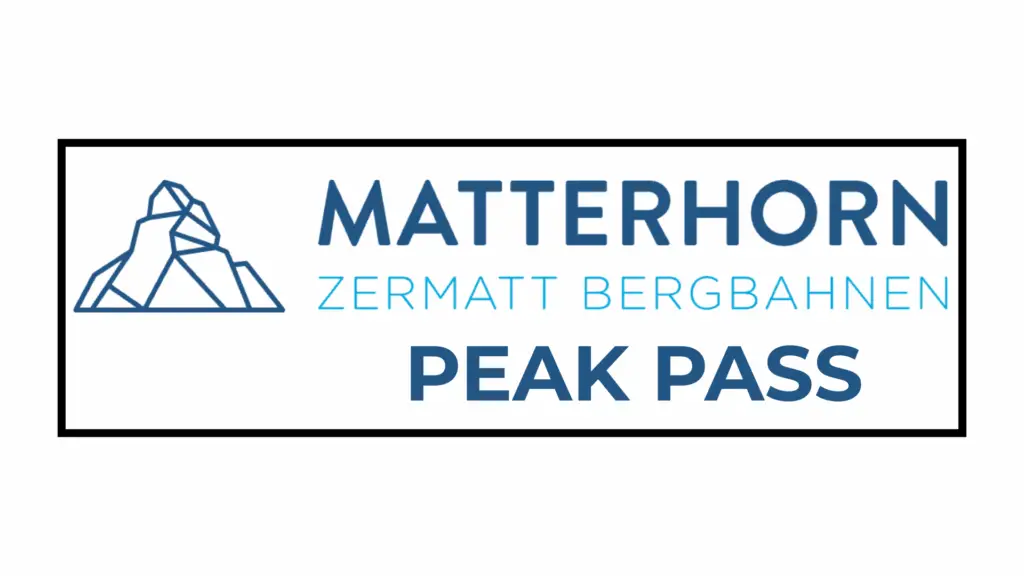
The Peak Pass is valid in this area highlighted in orange, and you’ll notice the most important destination where it can be used: Zermatt. It covers journeys all the way up to Gornergrat, Matterhorn Glacier Paradise, and on the Sunnegga-Rothorn line, which delivers you to the stunningly beautiful 5 Lakes Trail.

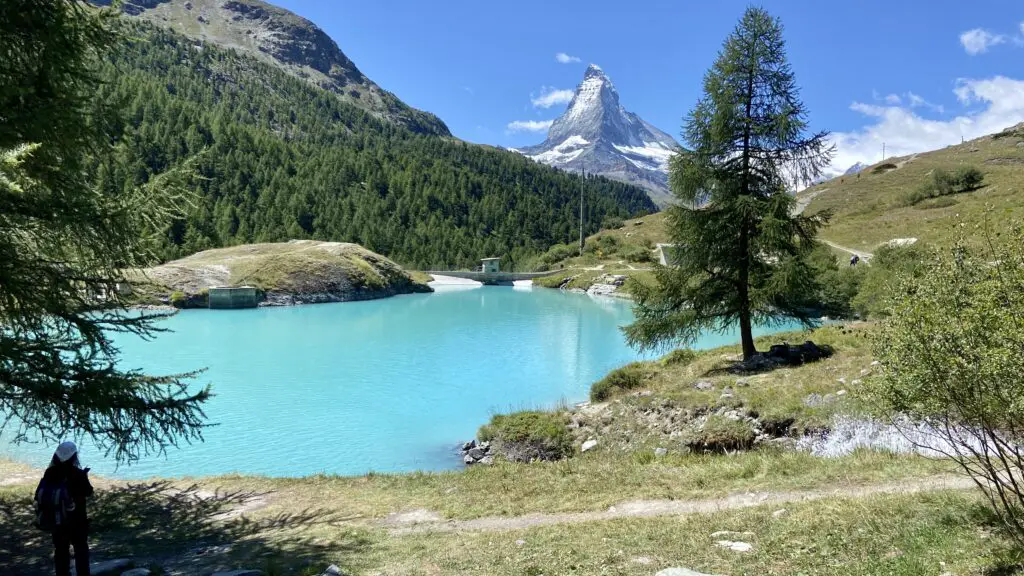
And it also covers the train to Zermatt from Randa or Täsch, which could be helpful since Zermatt is a car-free village, and you aren’t allowed to drive further than Täsch.
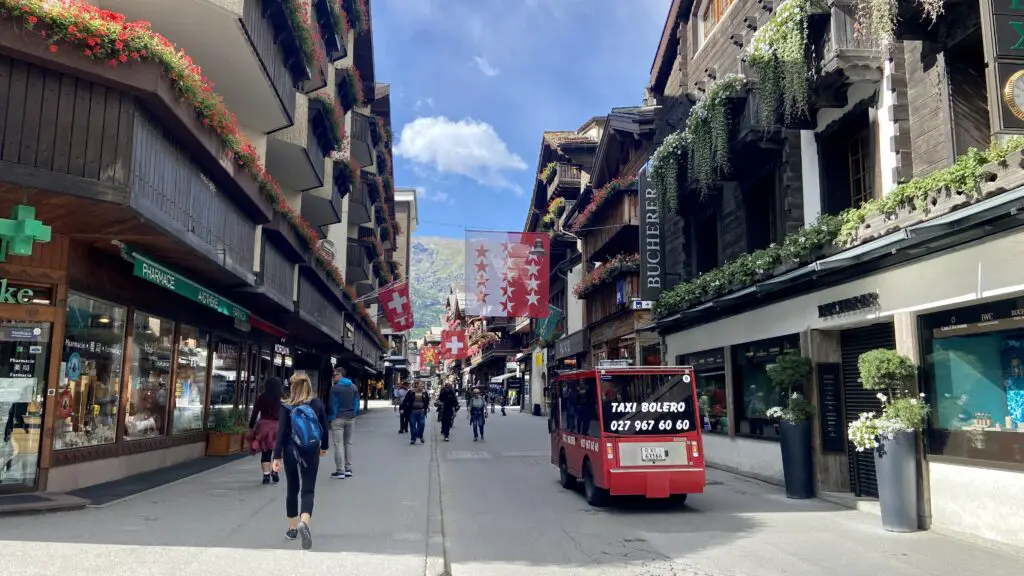
So this is the perfect CONVENIENCE buy if you’re planning to enjoy all of the high mountain excursions in Zermatt. It’s also incredibly SIMPLE to use, but it’s unfortunately a really expensive pass. You’ll probably need to ride all the way to the top of all three of these destinations in three days or less in order to see any COST SAVINGS with this pass.
Matterhorn Gotthard Pass
Looking a bit further, you’ll see that the Matterhorn Gotthard Pass, represented by this gray area, covers a pretty large territory which also includes Zermatt. But this is another one of those scenarios where it’s important that you understand the difference between the area of validity and the actual route coverage.
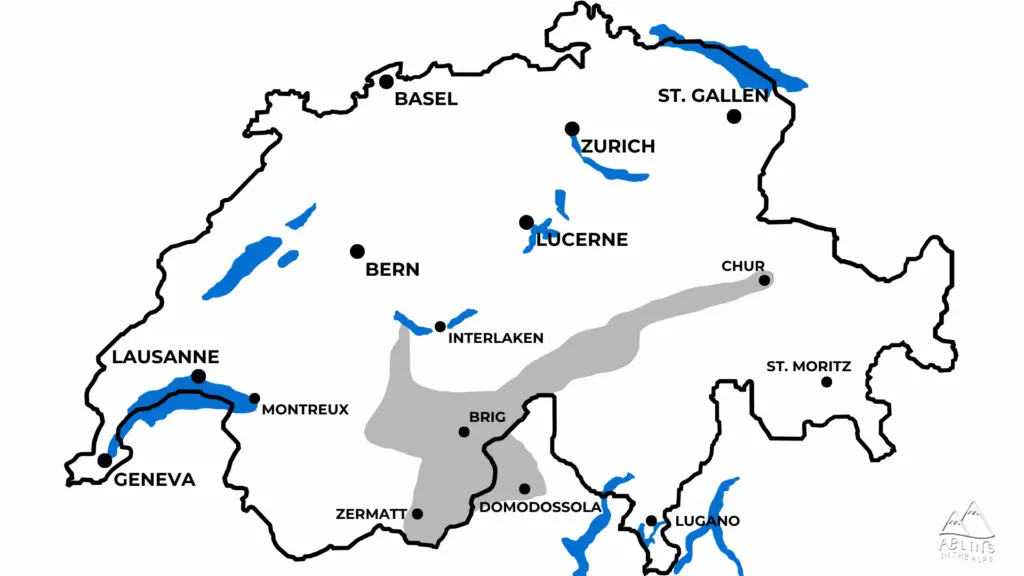
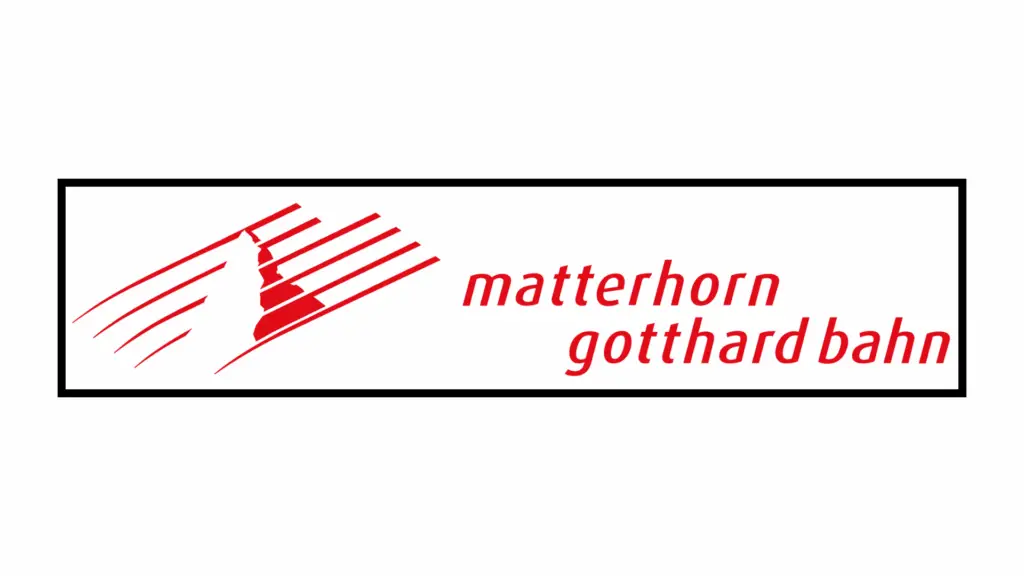
For example, trains between Zermatt and Andermatt (which is a large section of the Glacier Express), as well as trains from Kandersteg to the Italian border are 100% covered, but you’ll only get a 50% discount on the rides in Zermatt, like to Gornergrat or Glacier Paradise.
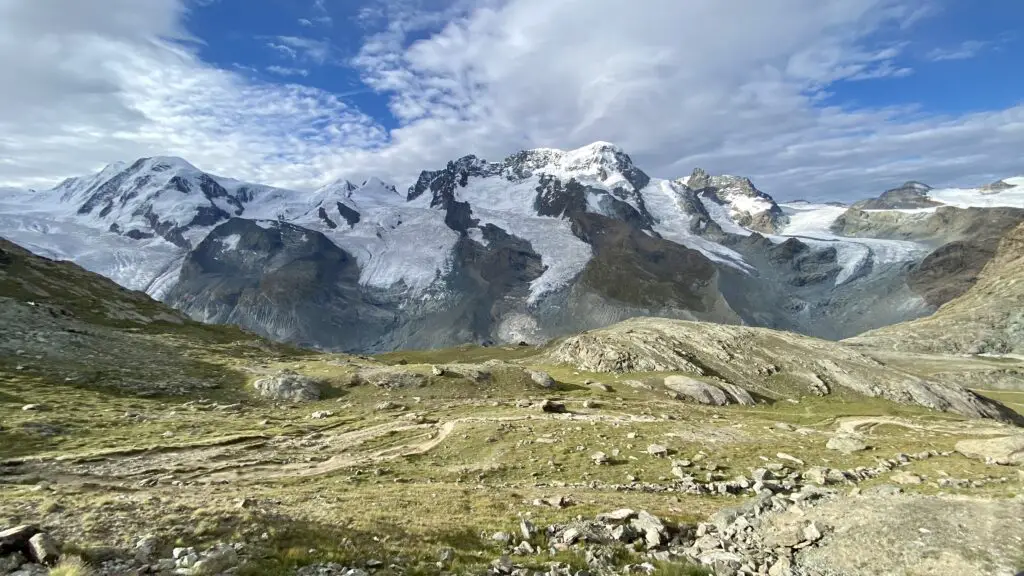
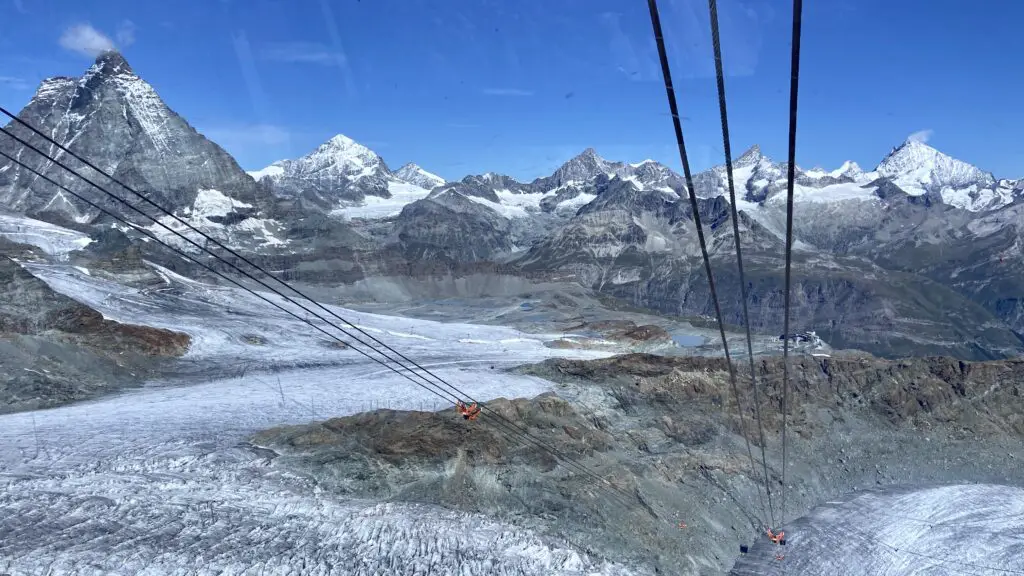
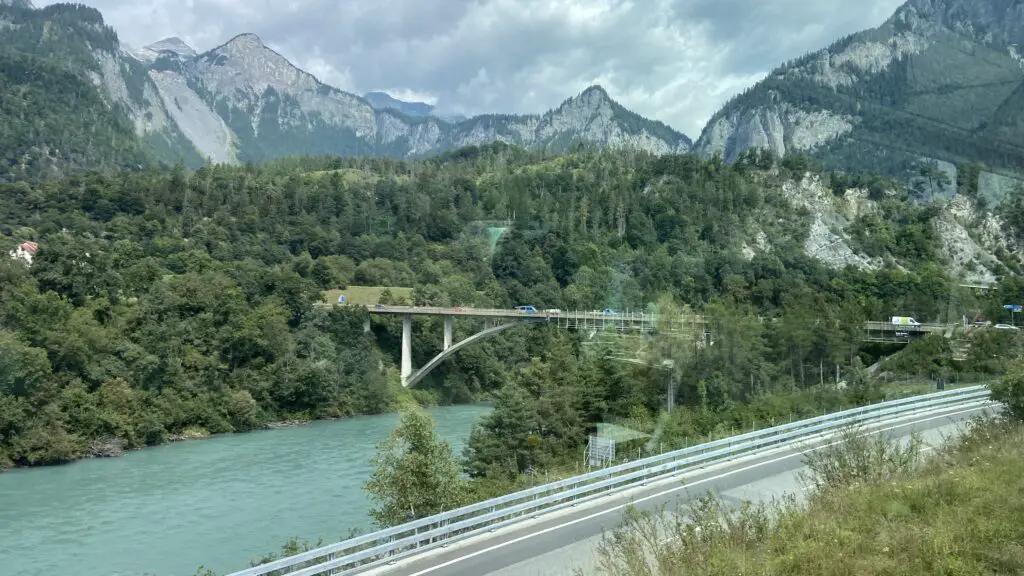
So there are very few likely instances where this pass would be better for you than a Half Fare Card if you value COST SAVINGS or a Peak Pass if you value CONVENIENCE or SIMPLICITY.
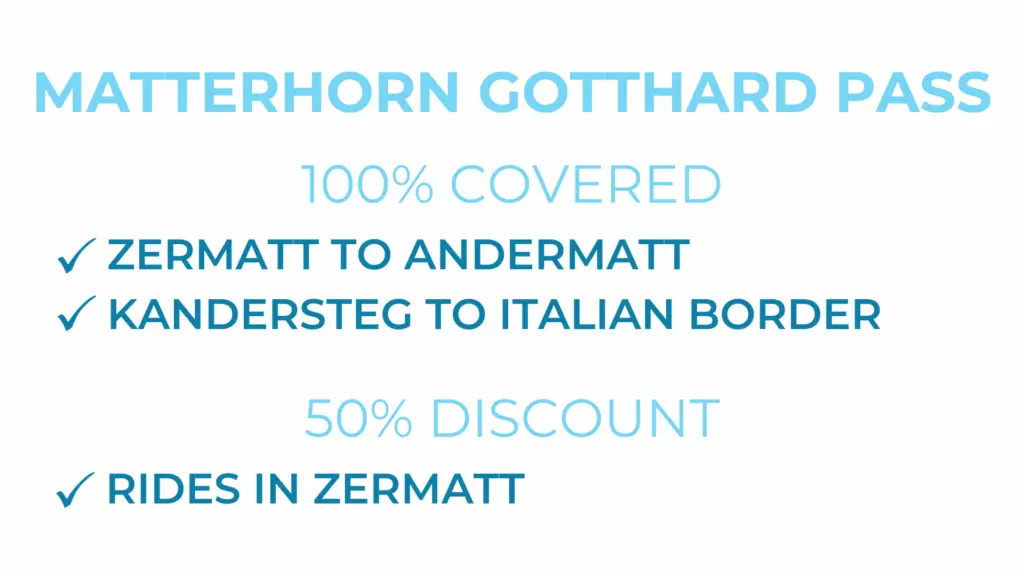
Lake Geneva-Alps Pass
Then there’s the Lake Geneva-Alps Pass, which is almost really cool. ALMOST.
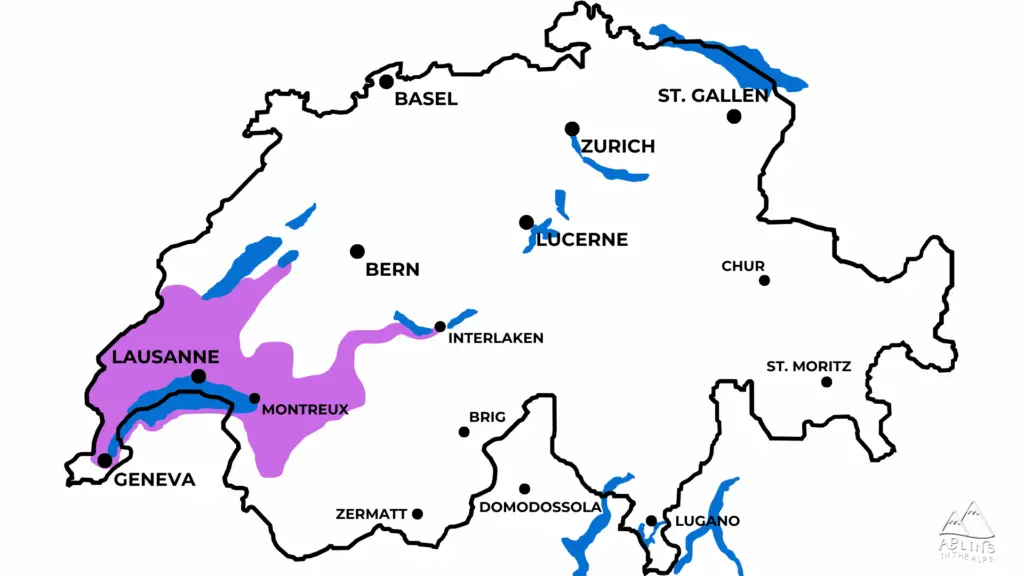
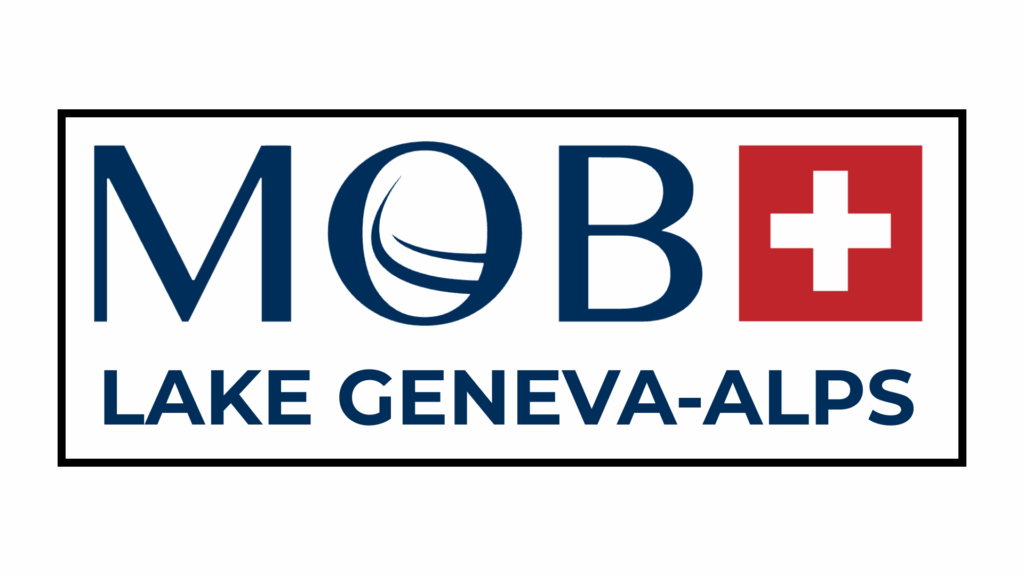
Its area of validity is highlighted here in purple, and it does offer the possibility of free travel on trains between Geneva, Lausanne, and Montreux, boat rides on Lake Geneva, and on the GoldenPass train lines between Montreux and Zweisimmen. And it could 100% cover journeys to the medieval village of Gruyeres and the cogwheel train up to Rochers-de-Naye.
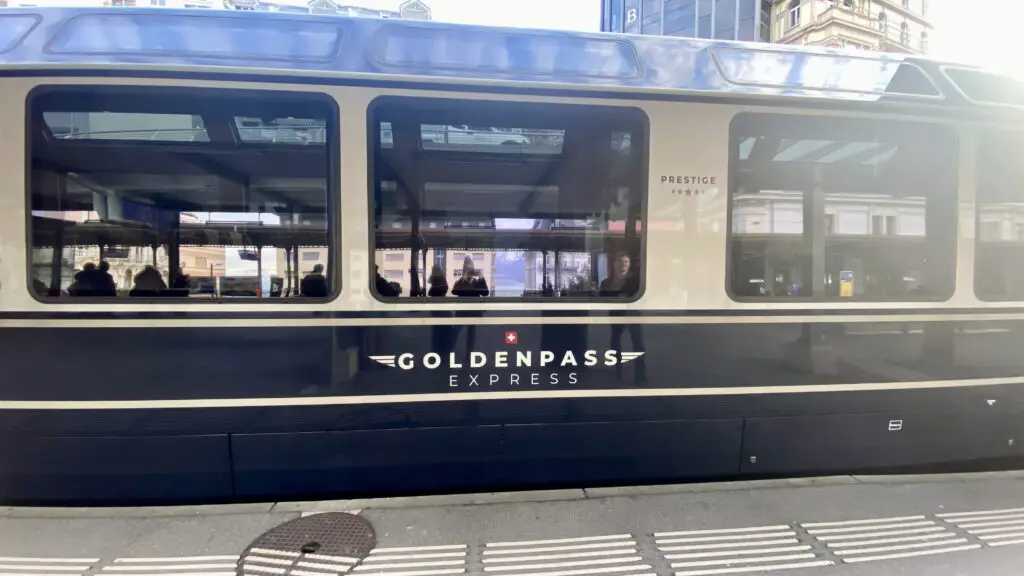
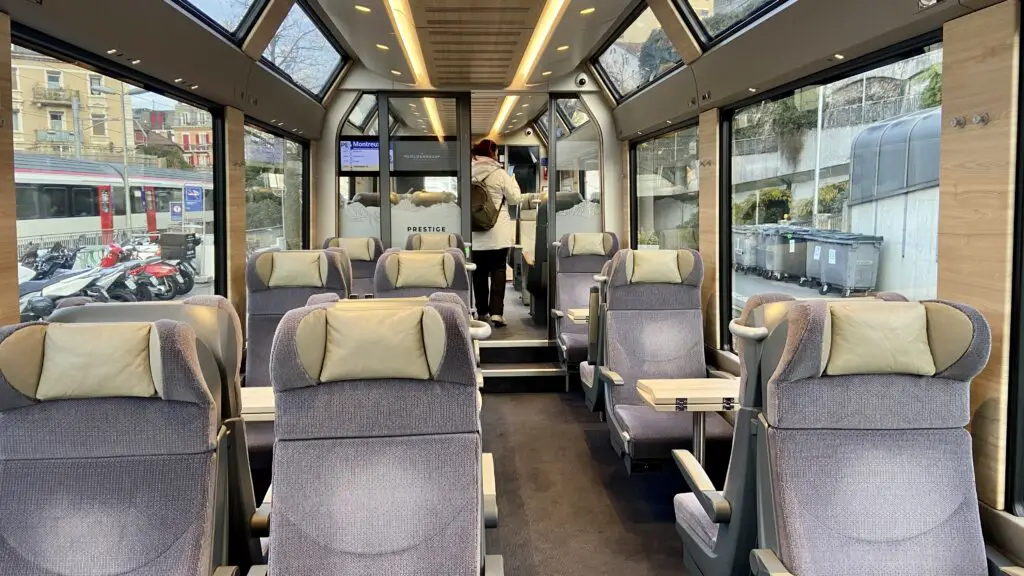
But beware: This pass combines two different types of route coverage — 2-3 days of “unlimited” travel, and 3-4 days of discounted travel. Plus, plenty of routes are only discounted even on those “unlimited” days. Confused yet? It’s essentially a mix of a regional pass and a Half Fare Card, which makes it pretty INCONVENIENT and CONFUSING.
But if you really value COST SAVINGS, you could theoretically build an itinerary to maximize this pass…if you’re willing to deal with the complexity that comes with it.
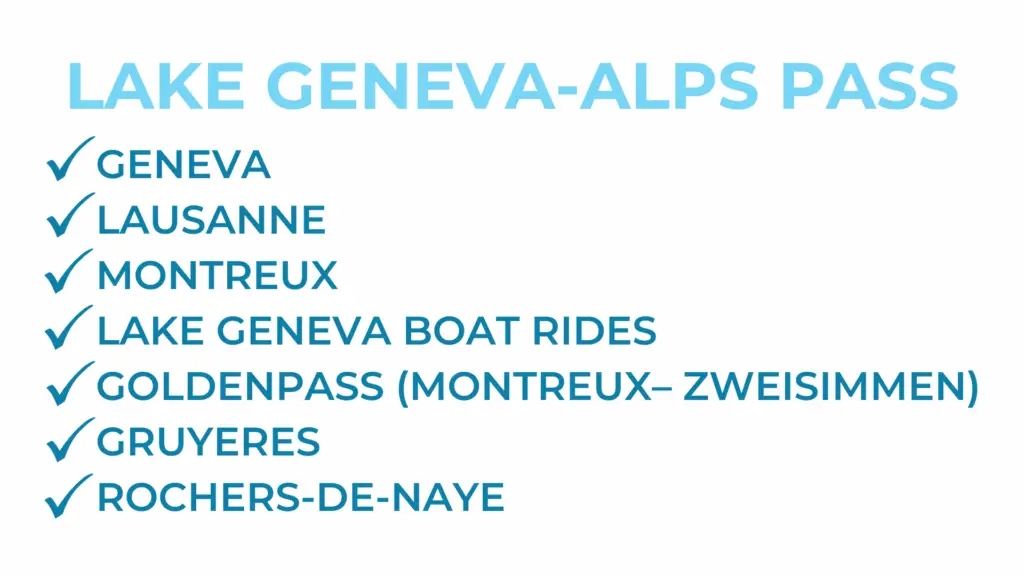
Graubünden Pass
Finally, there’s the Graubünden Pass, highlighted here in blue. It’s a flex pass, allowing you to travel for free within the area of validity for any two days within 1 week, or any 5 days within two weeks. There are two zones, and you can buy a pass covering either or both of these zones.
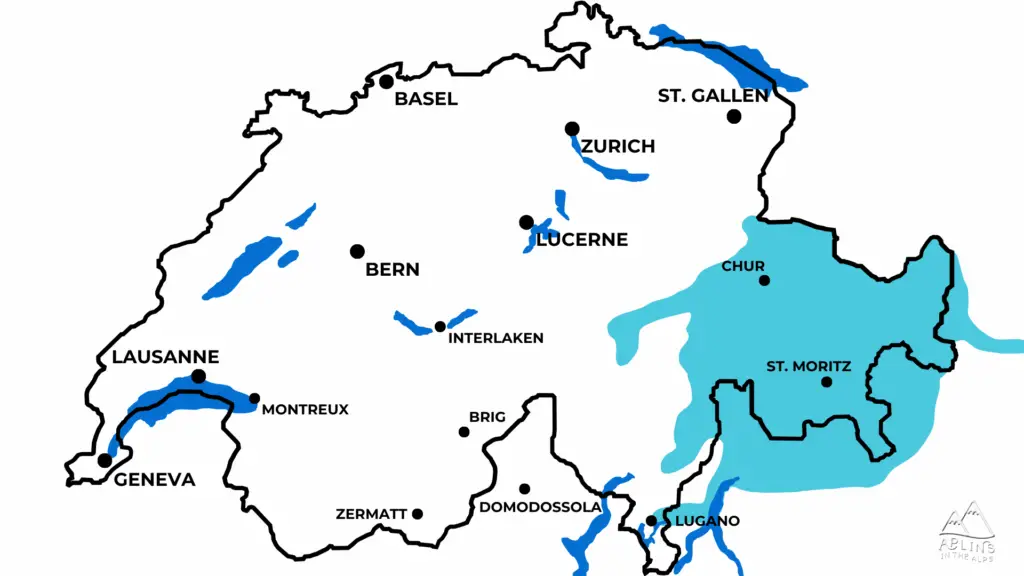
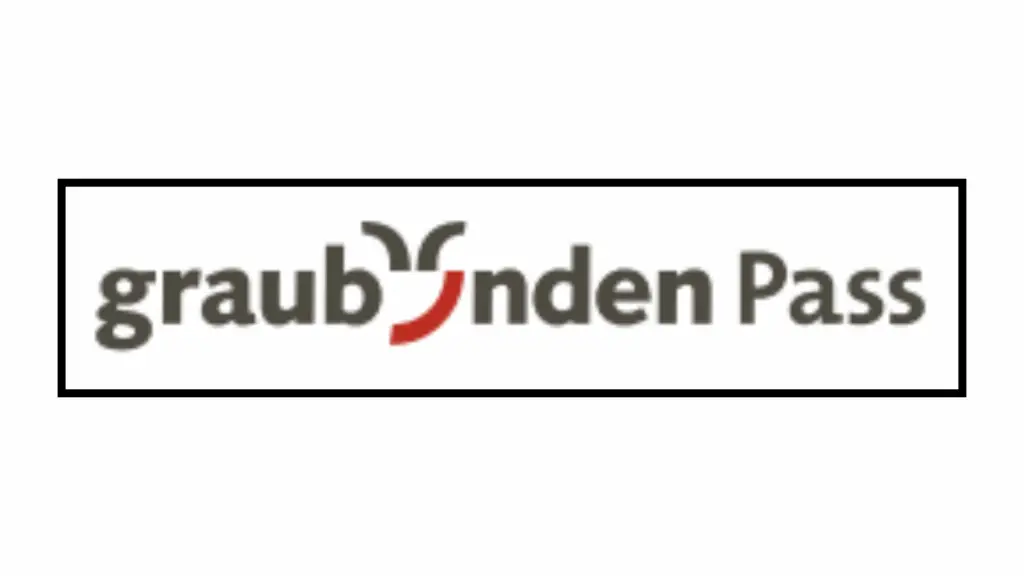
The best part about this pass for most of you is that it covers the entire Bernina Express train and bus rides (excluding seat reservations), as well as the section of the Glacier Express from the Oberalp Pass to St. Moritz.
Now you’re probably better off using your Swiss Travel Pass, Half Fare Card, or Saver Day Passes for those rides. But if you intend to deeply explore this beautiful and much less touristed corner of Switzerland, this would be a pass to consider.
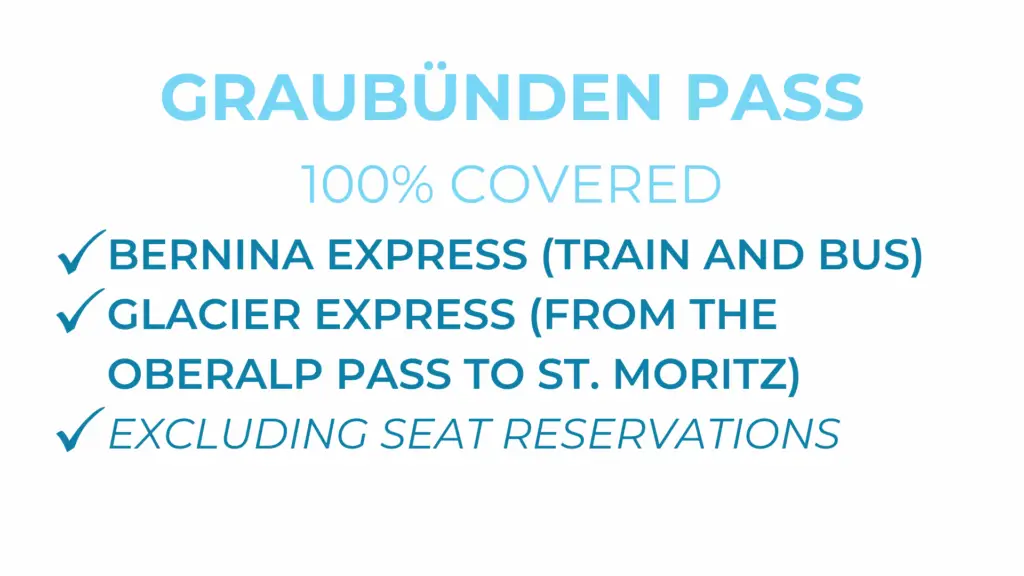
Ticino Ticket and Guest Cards
Now before we move on, I wanted to touch on one more region we haven’t highlighted. Ticino is the heart of Italian-speaking Switzerland, and if you’re looking to enjoy a little dolce vita, the Ticino Ticket could be your ticket to a little cost savings and convenience, where local buses and trains are free, and most mountain destinations are discounted.
But we left it out of our rundown of regional train passes because it’s actually a guest card instead of a train pass — you’ll receive one simply by being an overnight guest and paying the tourist tax in a hotel, hostel, or campsite in the canton of Ticino.
In fact, guest cards are yet another element to consider as you’re thinking through your Swiss Train Pass strategy, and as you might suspect, we have a video about them too.
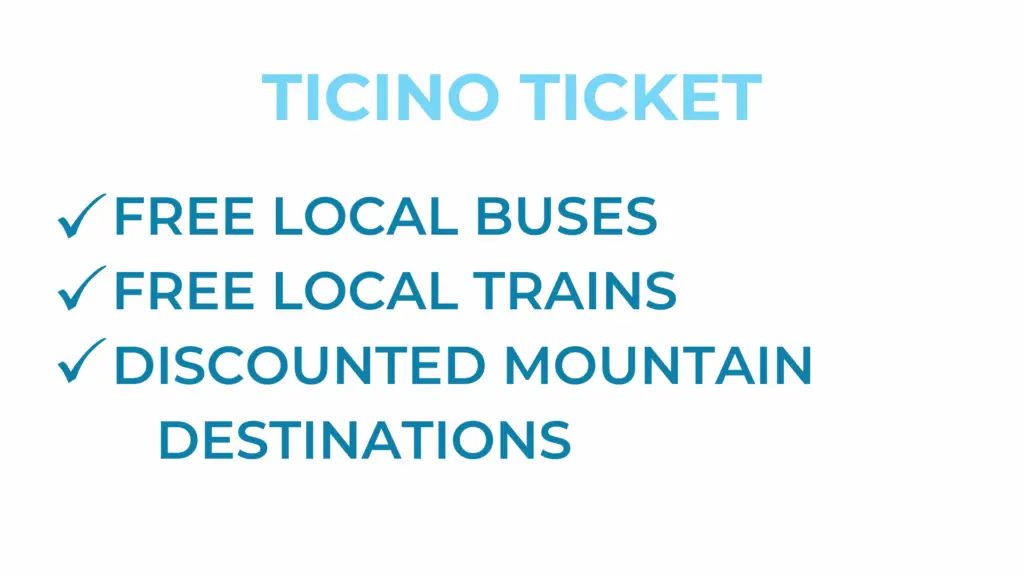
Swiss Train Pass FAQs
But at this point, you might still be left with more questions:
- Should I buy my train passes in advance?
- Can (or should) I choose a First Class pass instead of a Second Class pass?
- Do I have to validate my pass before using it?
- If I have a Half Fare Card, can I buy another train pass with a 50% discount?
- Are there passes for children or senior citizens?
- Do I need a train pass if I’ll have a car?
- And how do I make sure I don’t look like a complete rookie when I ride public transportation in Switzerland??
Don’t worry, we have the answers to all of those questions, plus the ones you haven’t thought to ask yet. So before you buy any of your passes, grab the free Checklist — it’ll save you time, money, and stress. Then read this next to learn how to ride Swiss transportation like a pro. And we’ll see you on the trains in Switzerland!

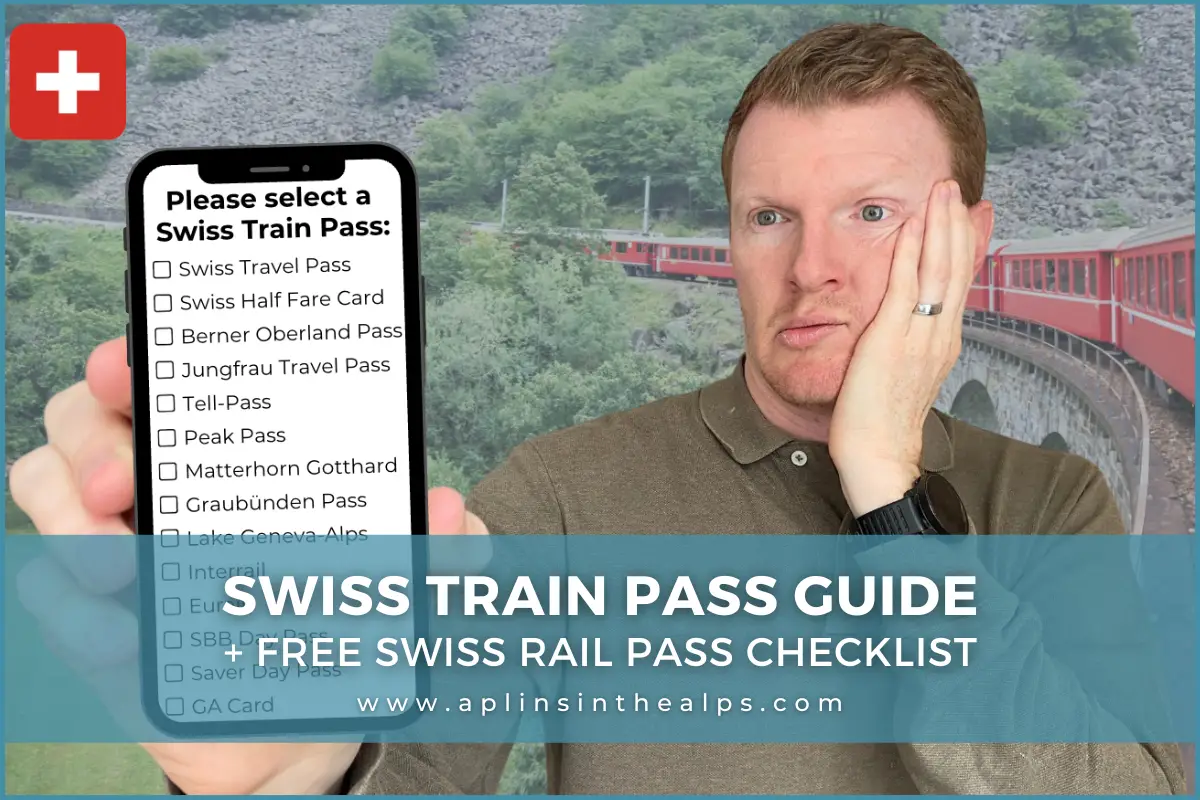
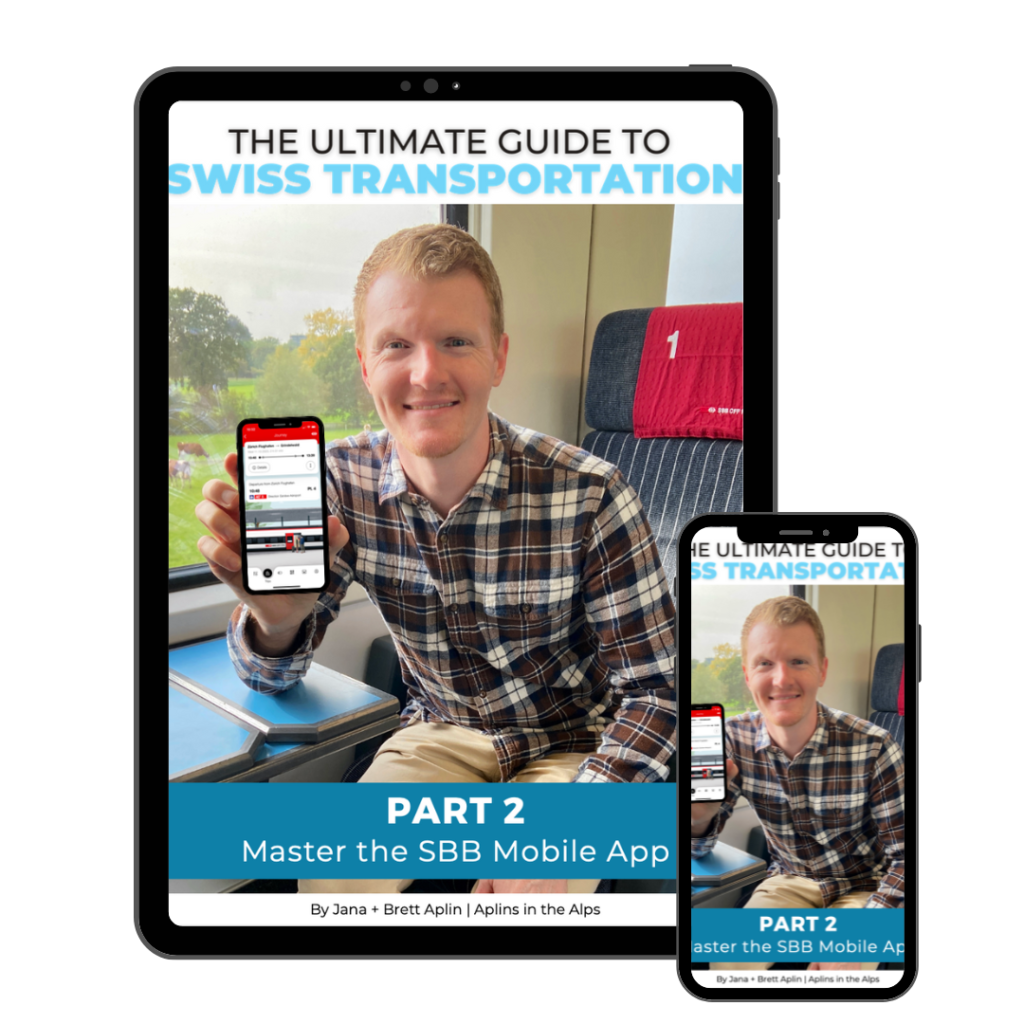
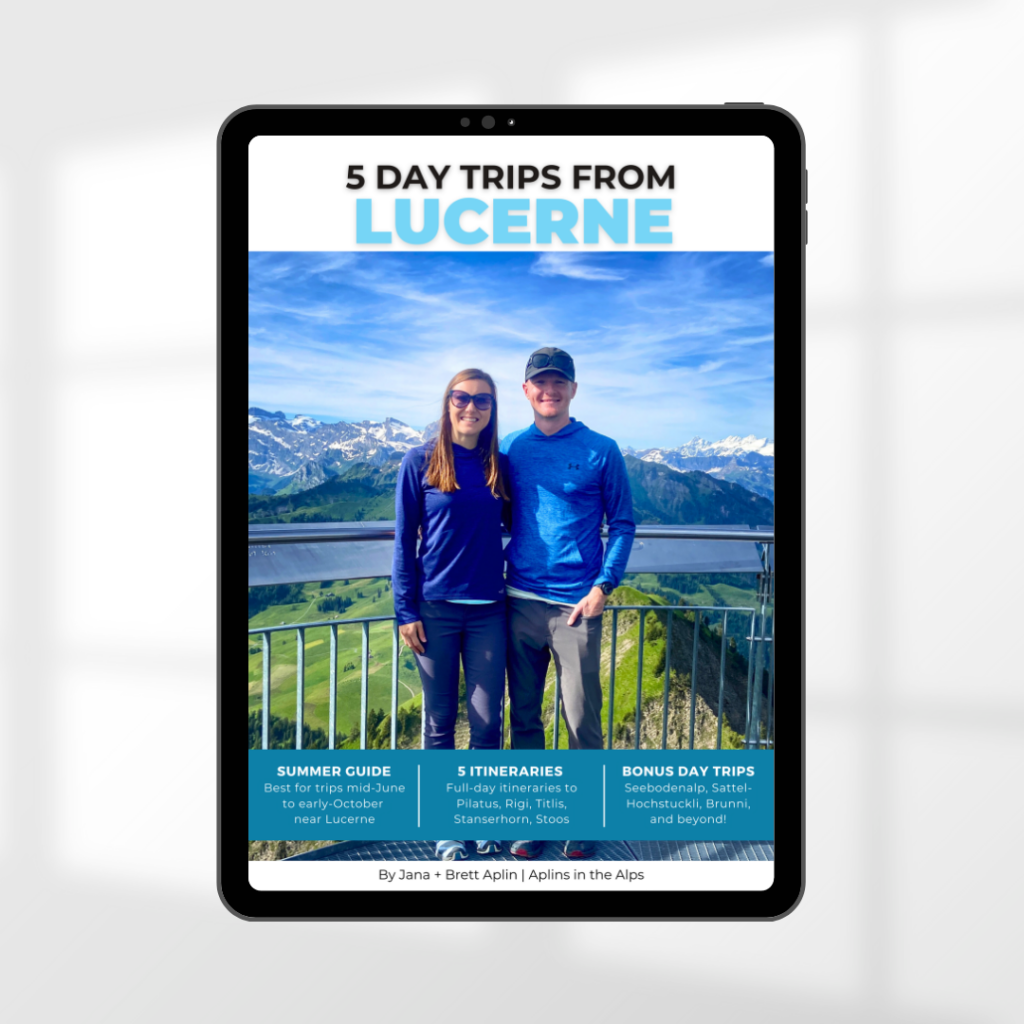
What if I purchase a Tell Pass for 3 or 4 days starting on a certain date and then the weather is too bad to do any of the day trips from Lucerne?
I will be staying ion Lucerne for 7 days and planning on doing 3 or 4 of the day trips you recommended. Is it practical to also do a day trip to Interlaken?
Hi Chuck! You can buy these passes on the spot, so no need to purchase in advance if you’d rather wait to see what the weather is like!
And yes — a day trip to Interlaken is practical, and beautiful!